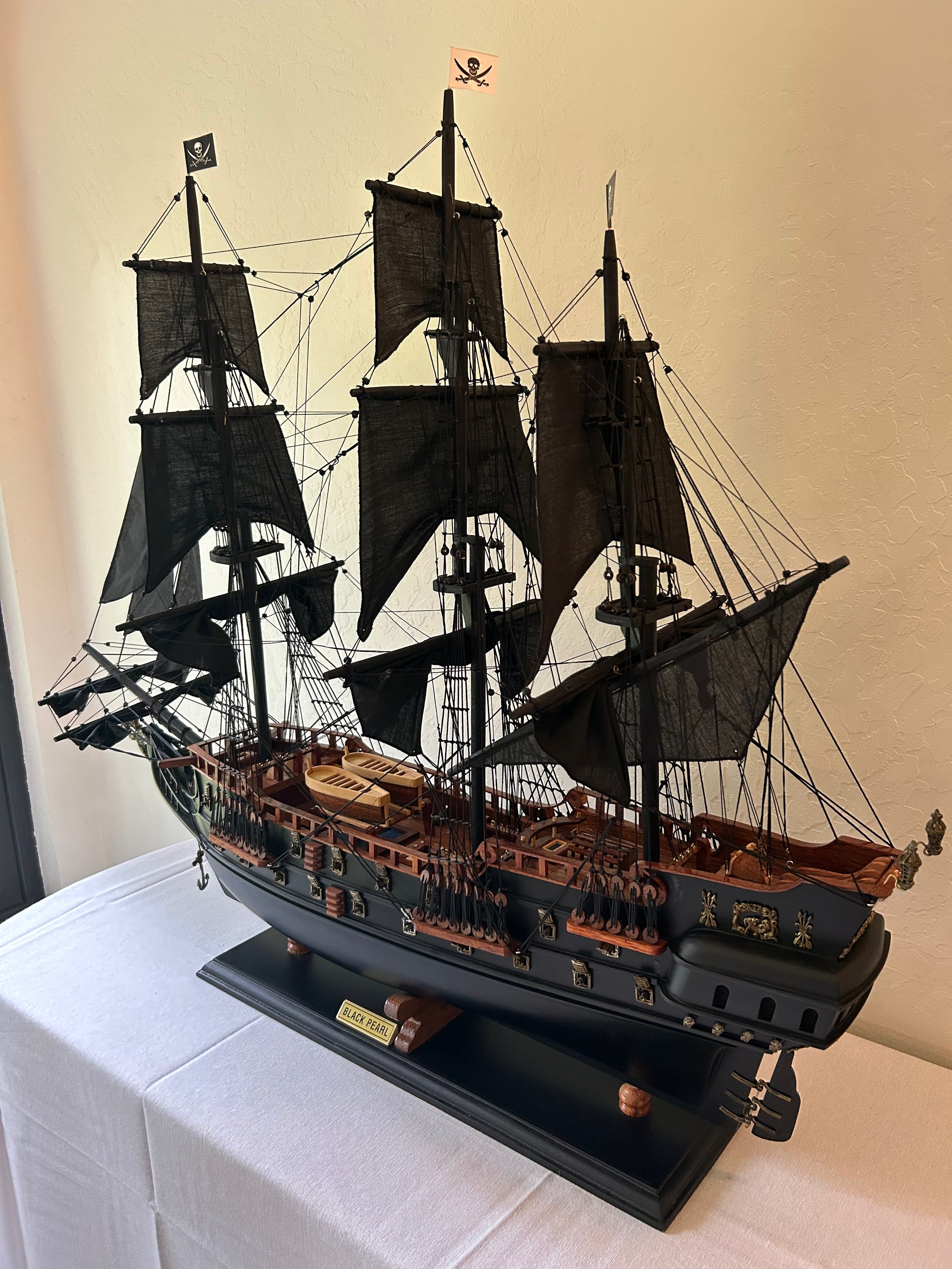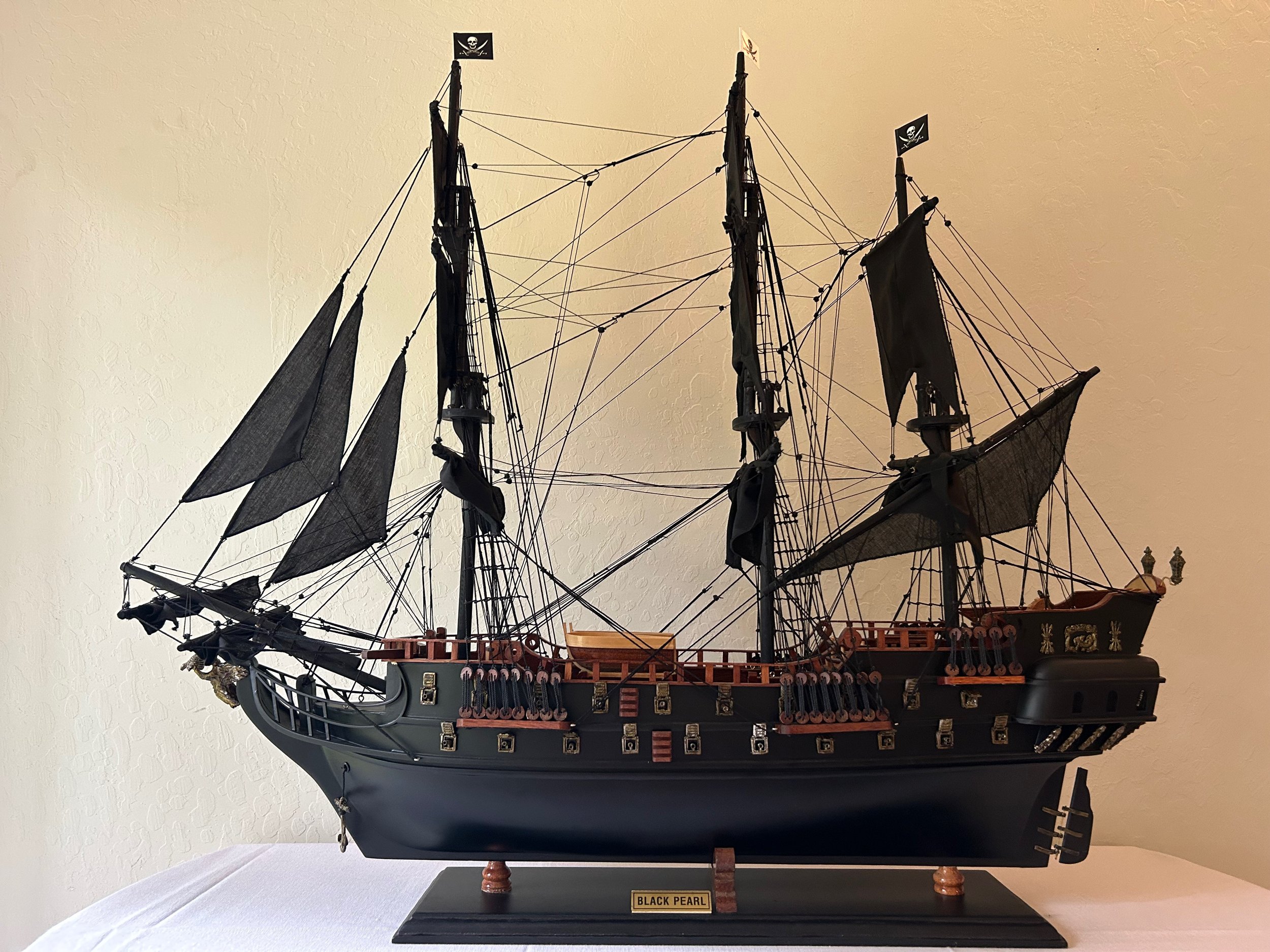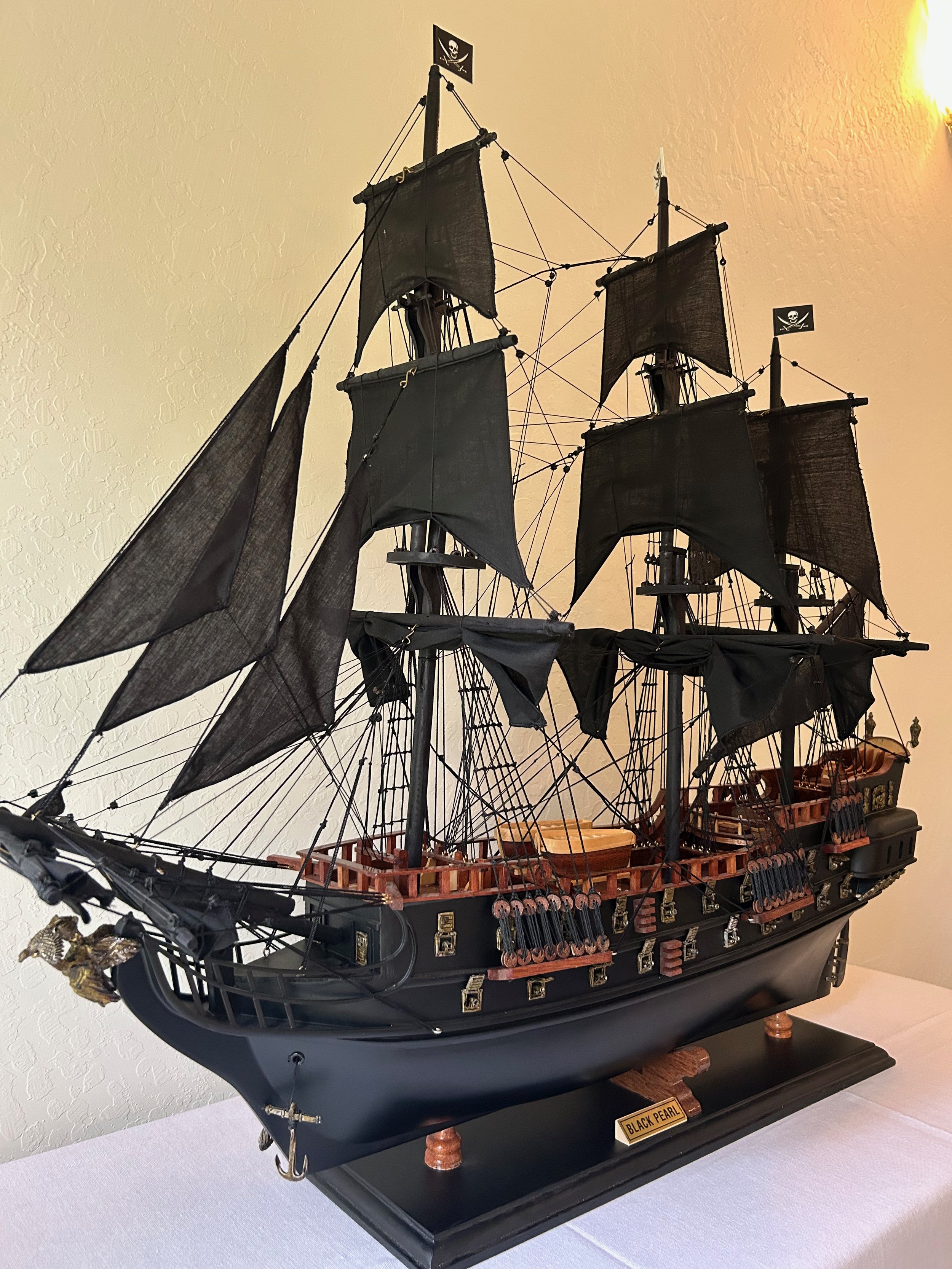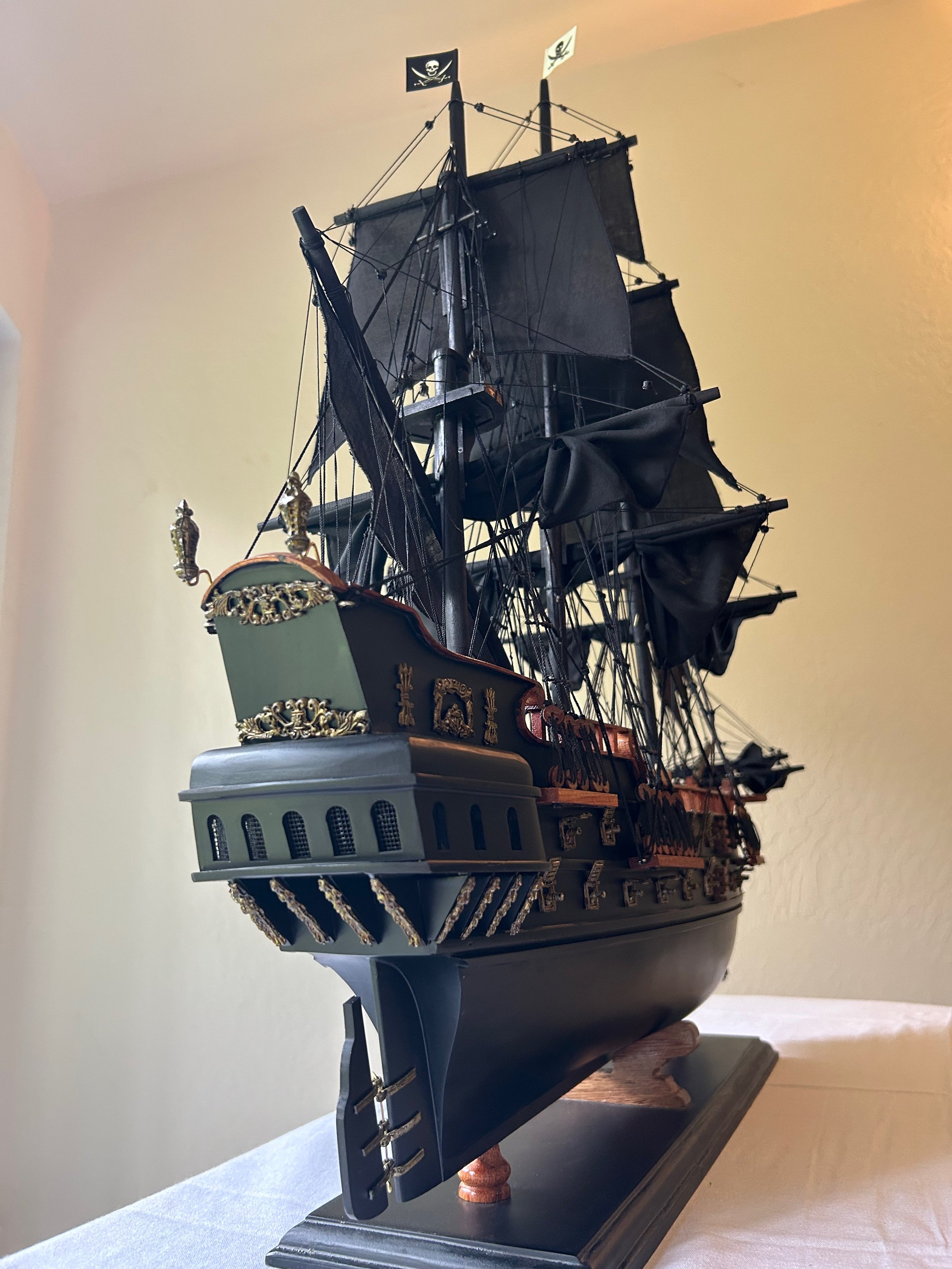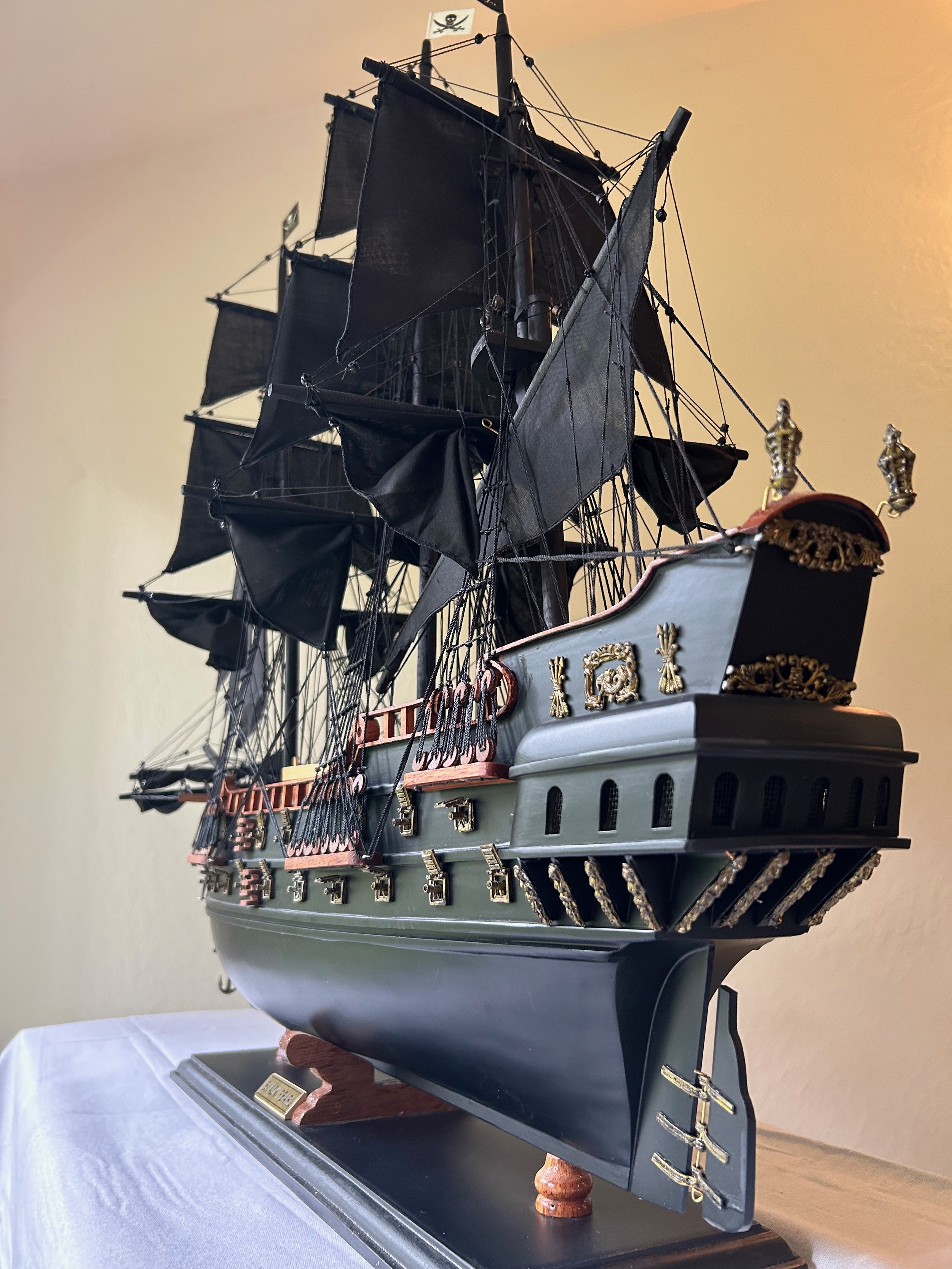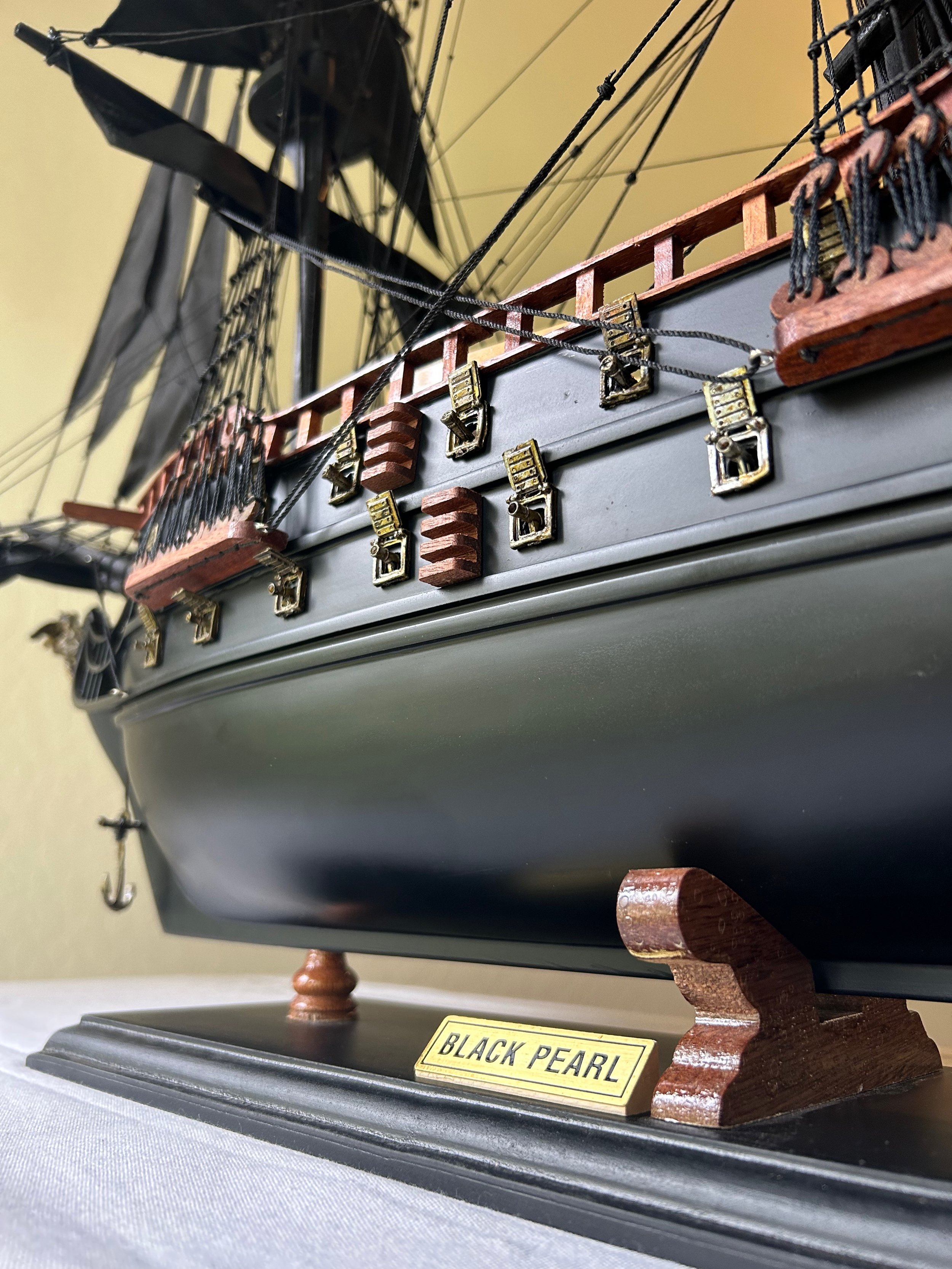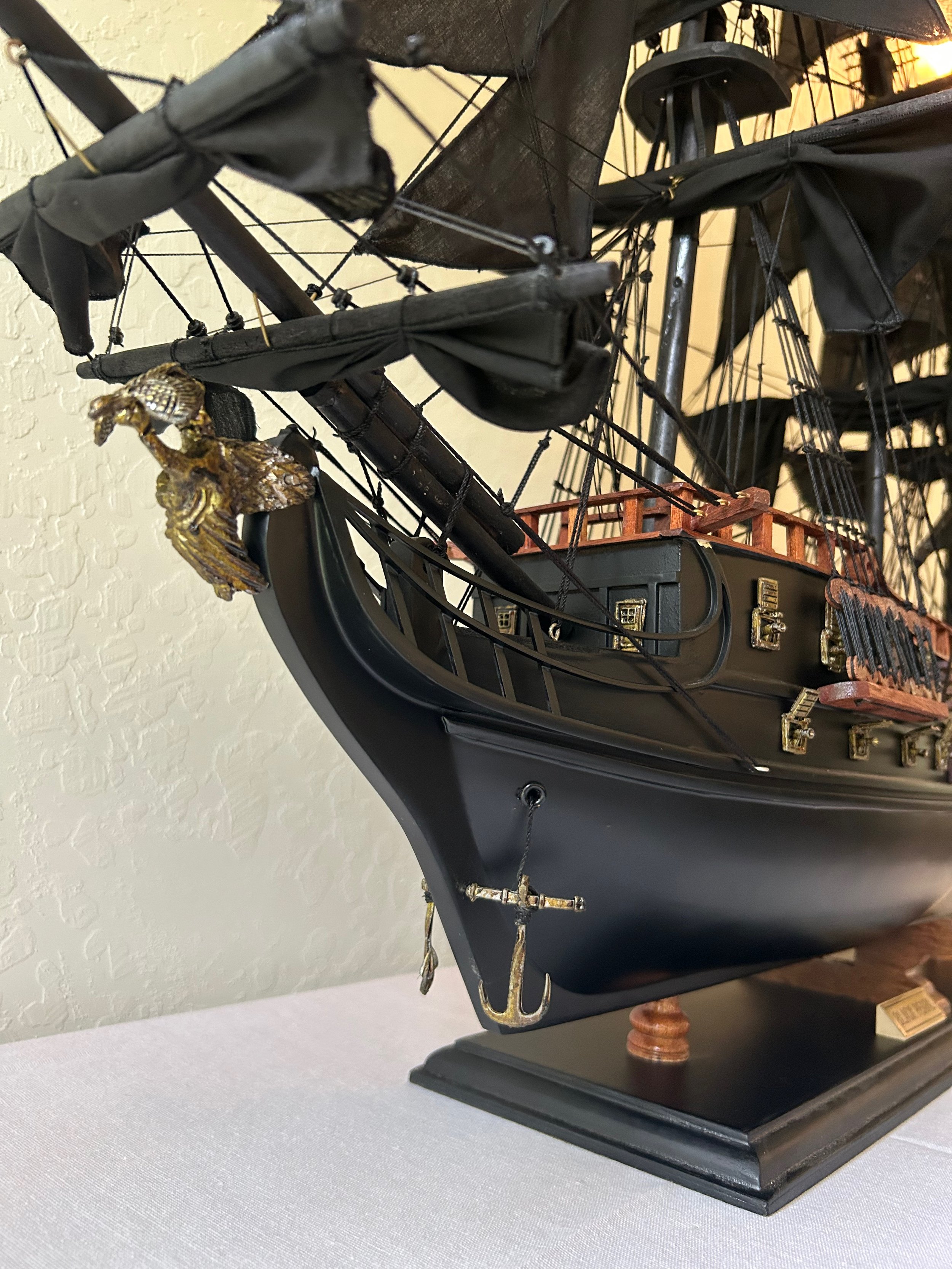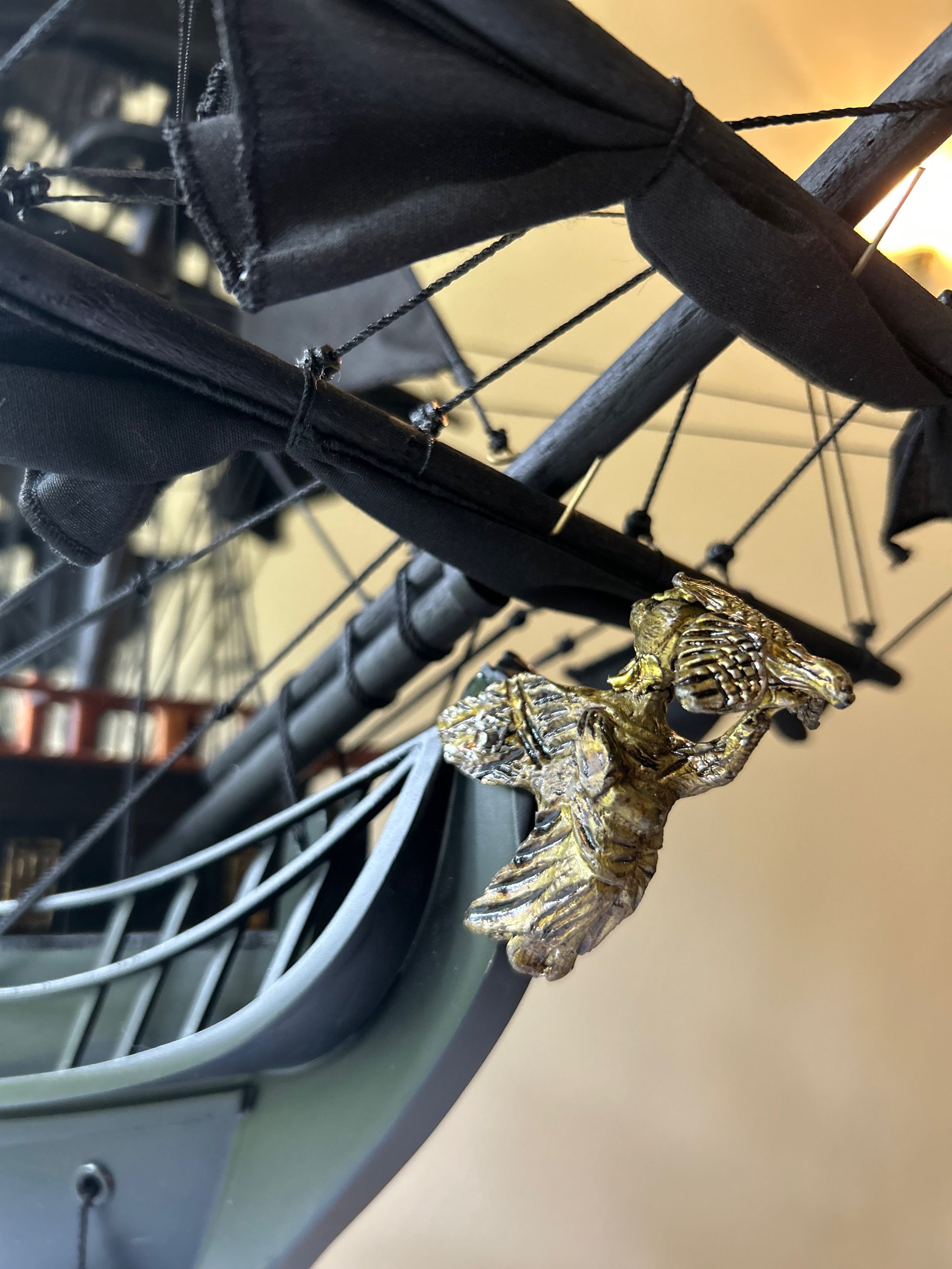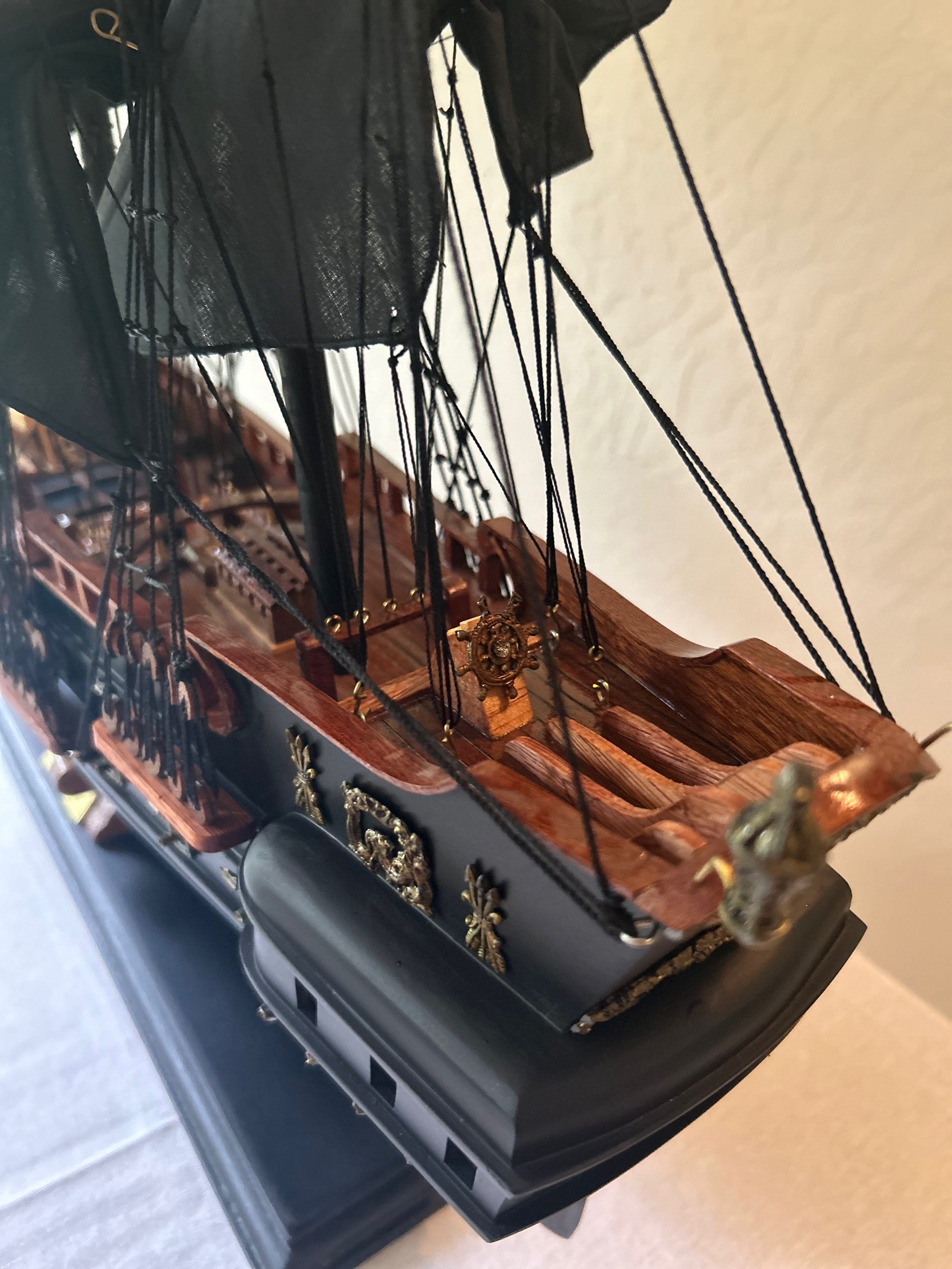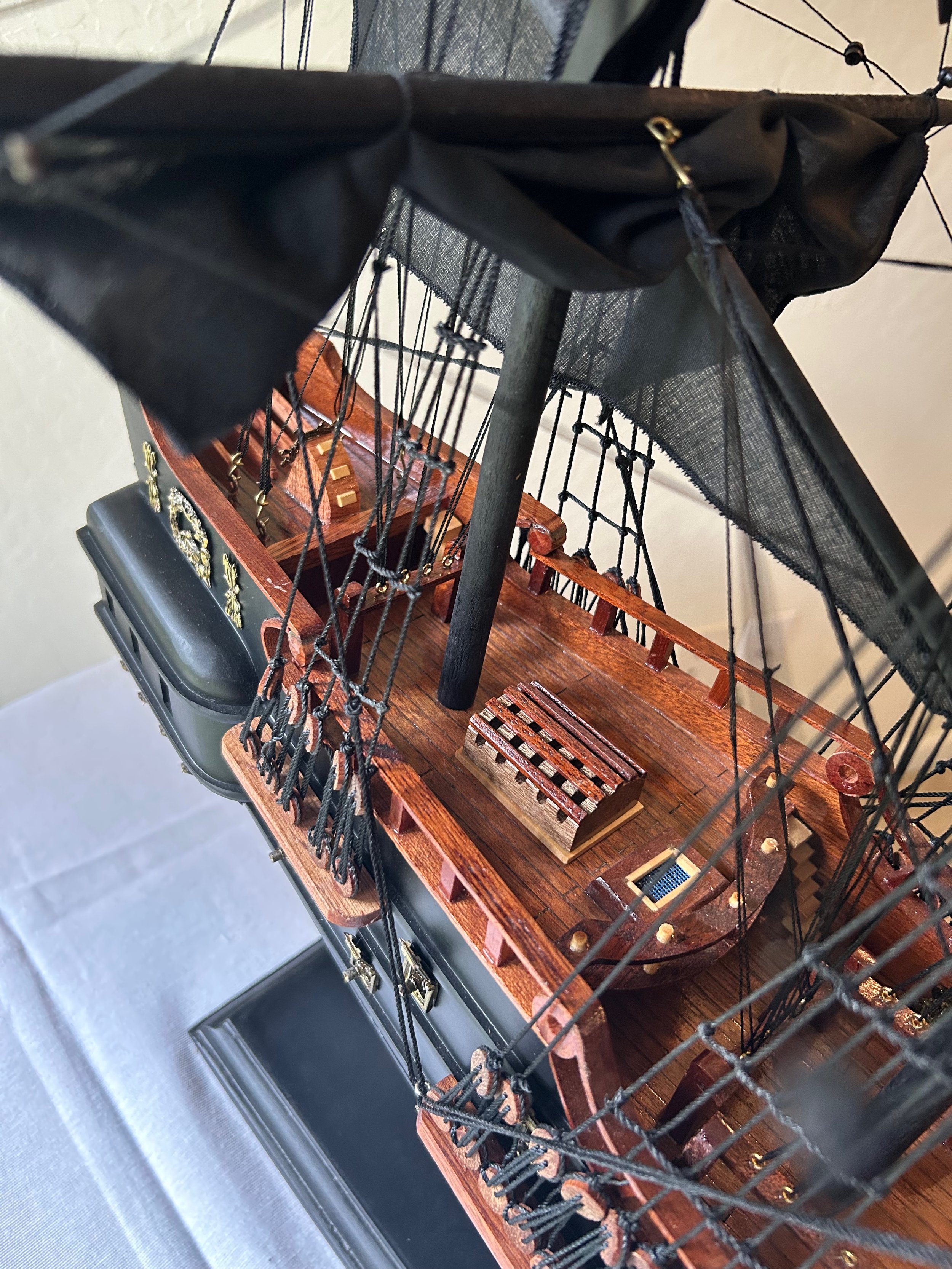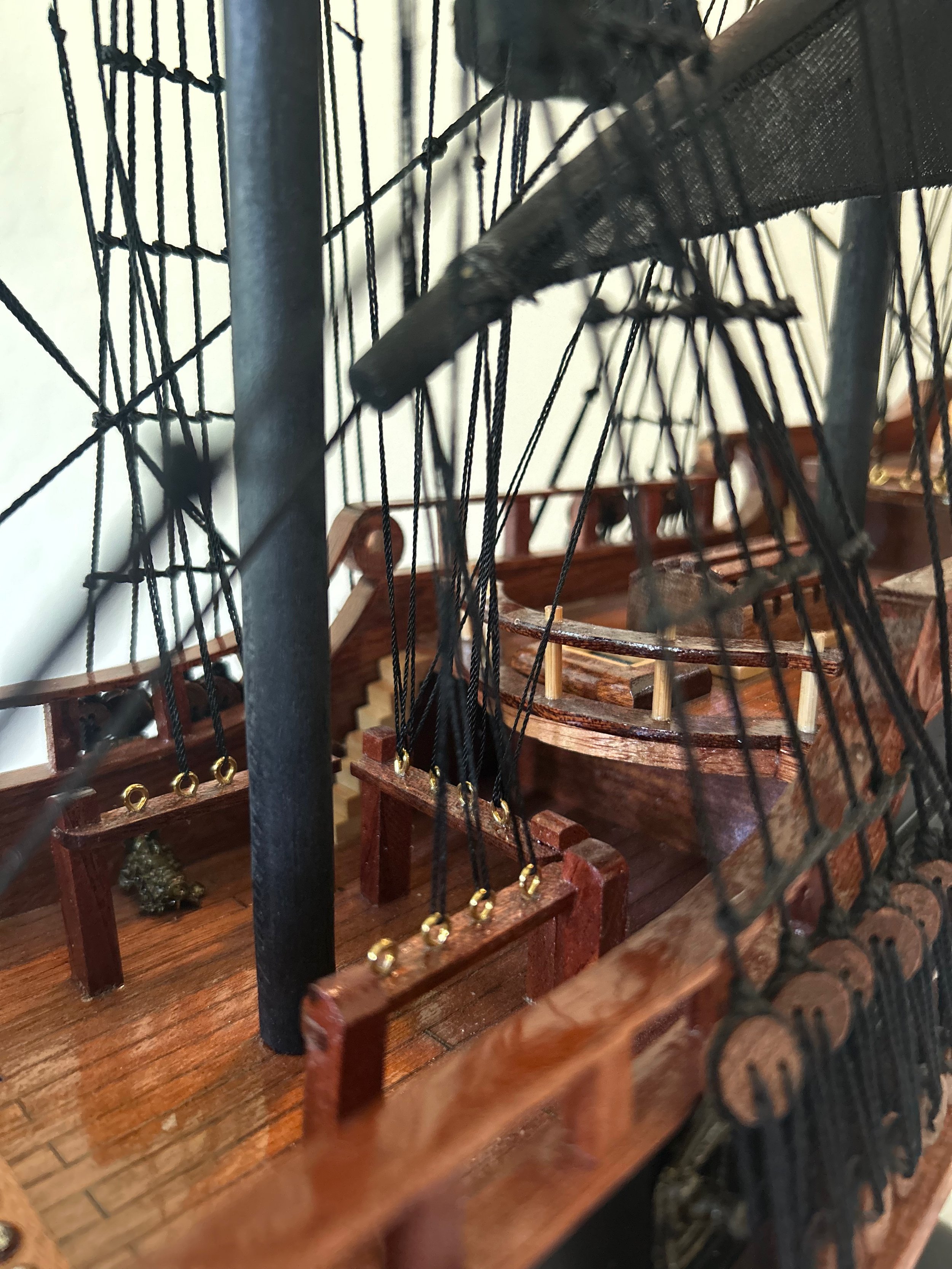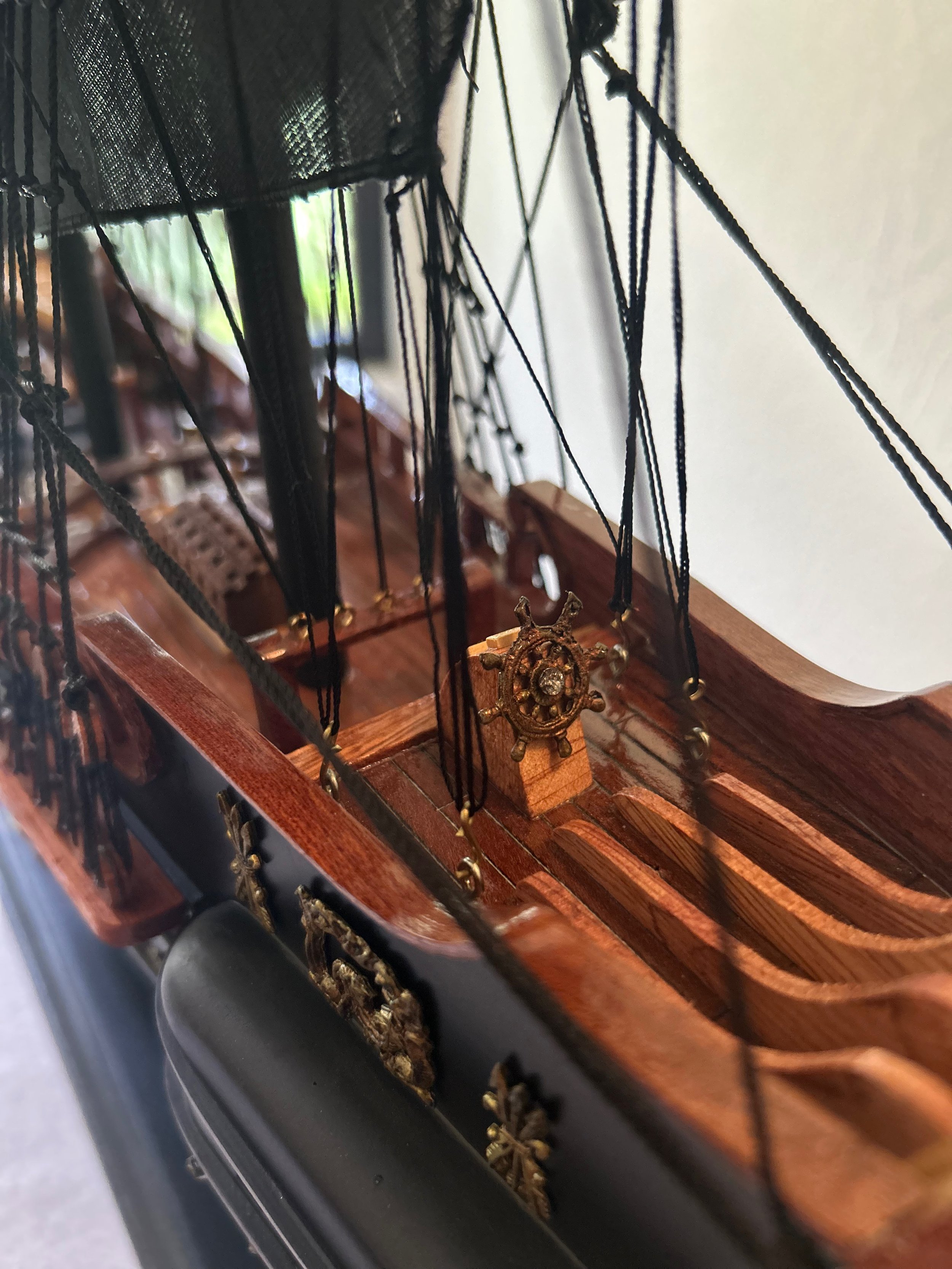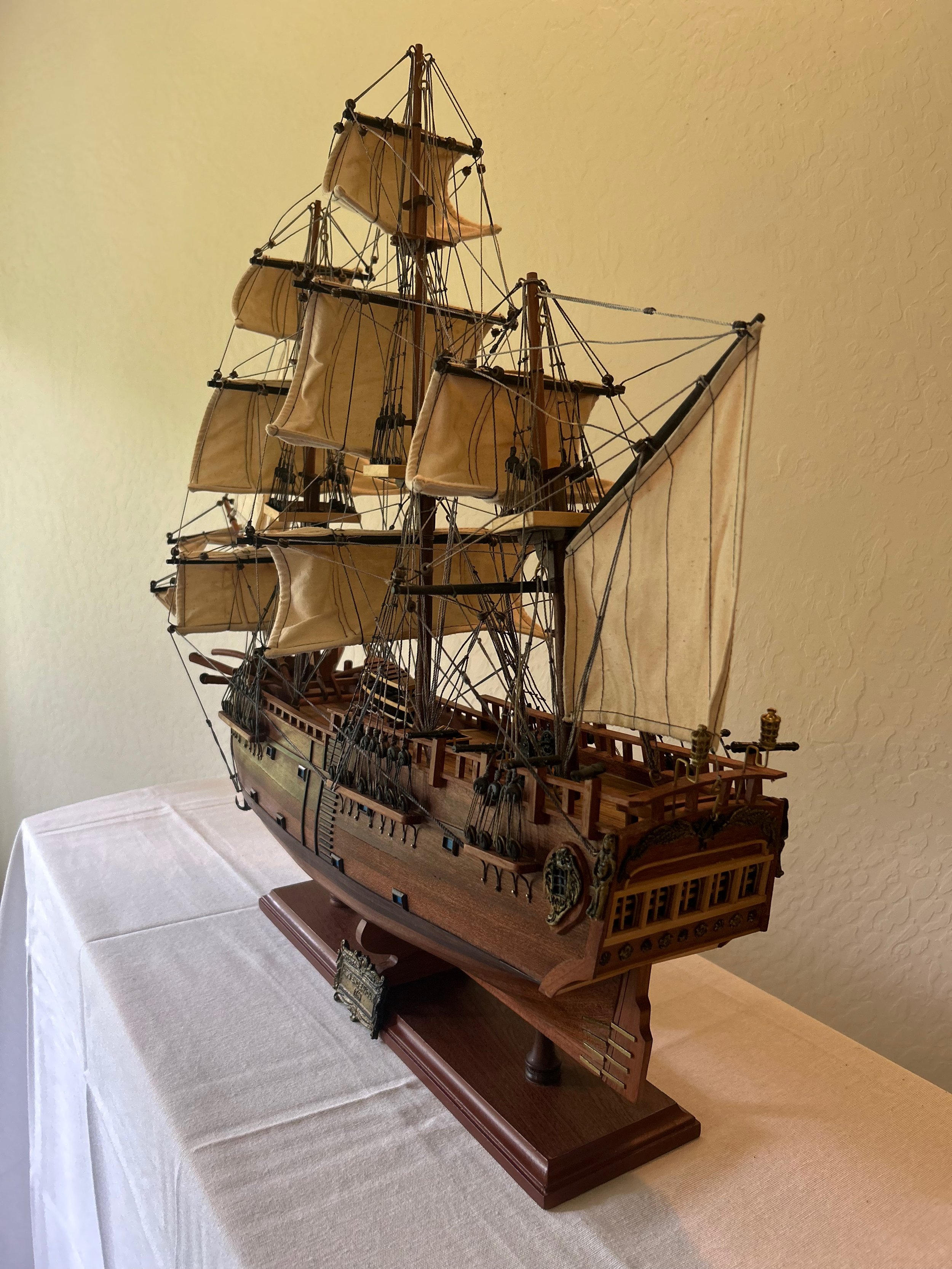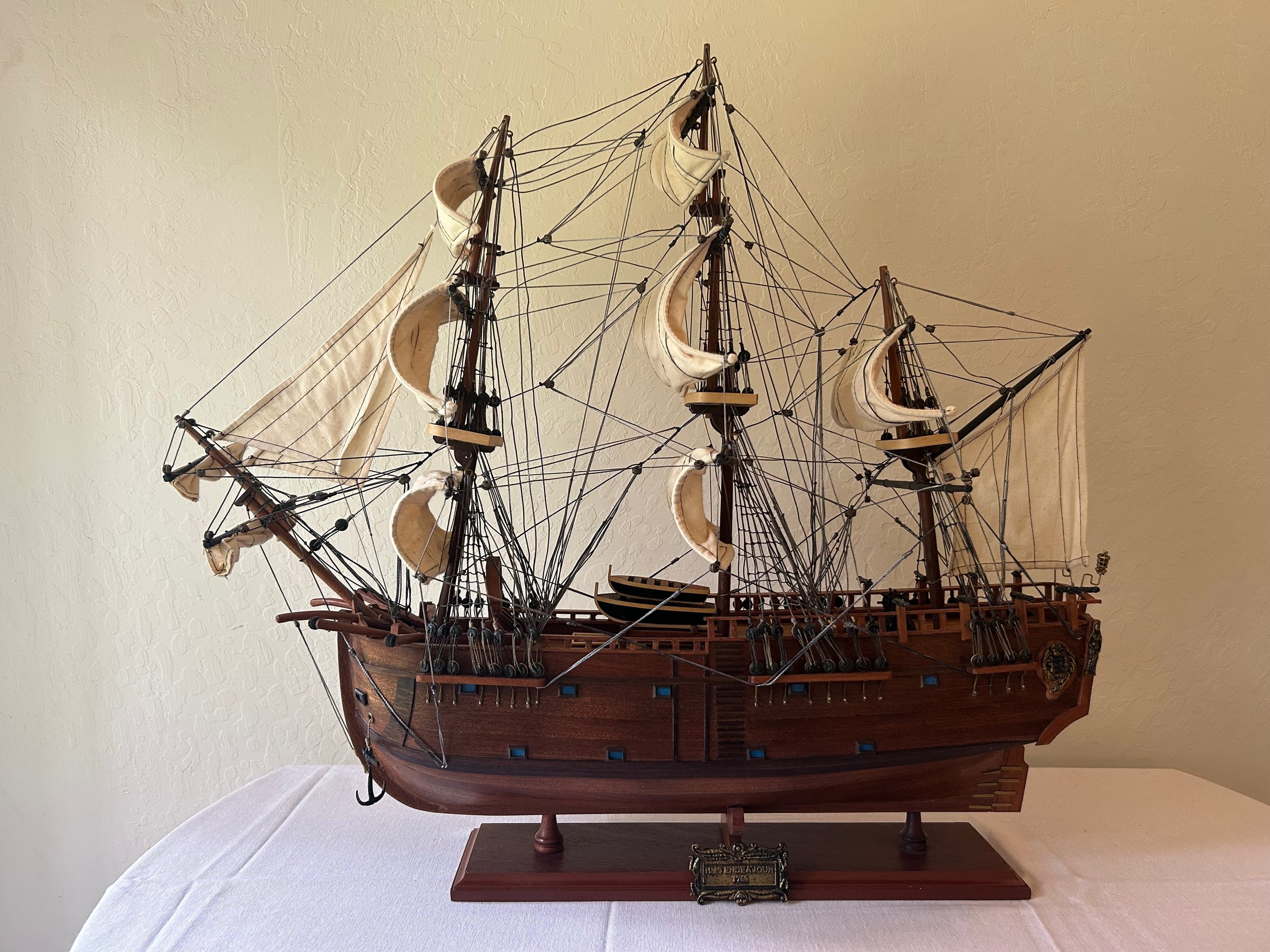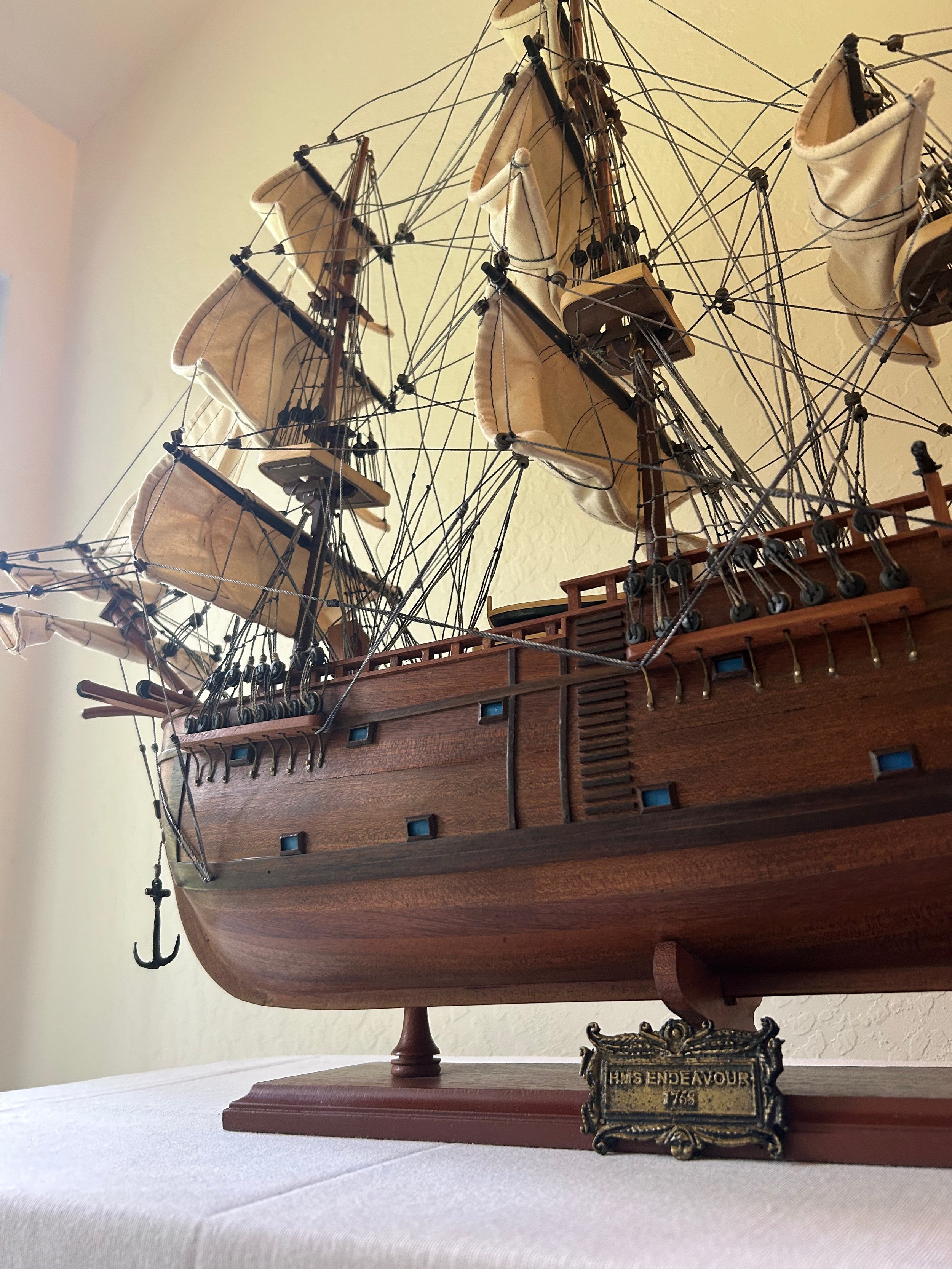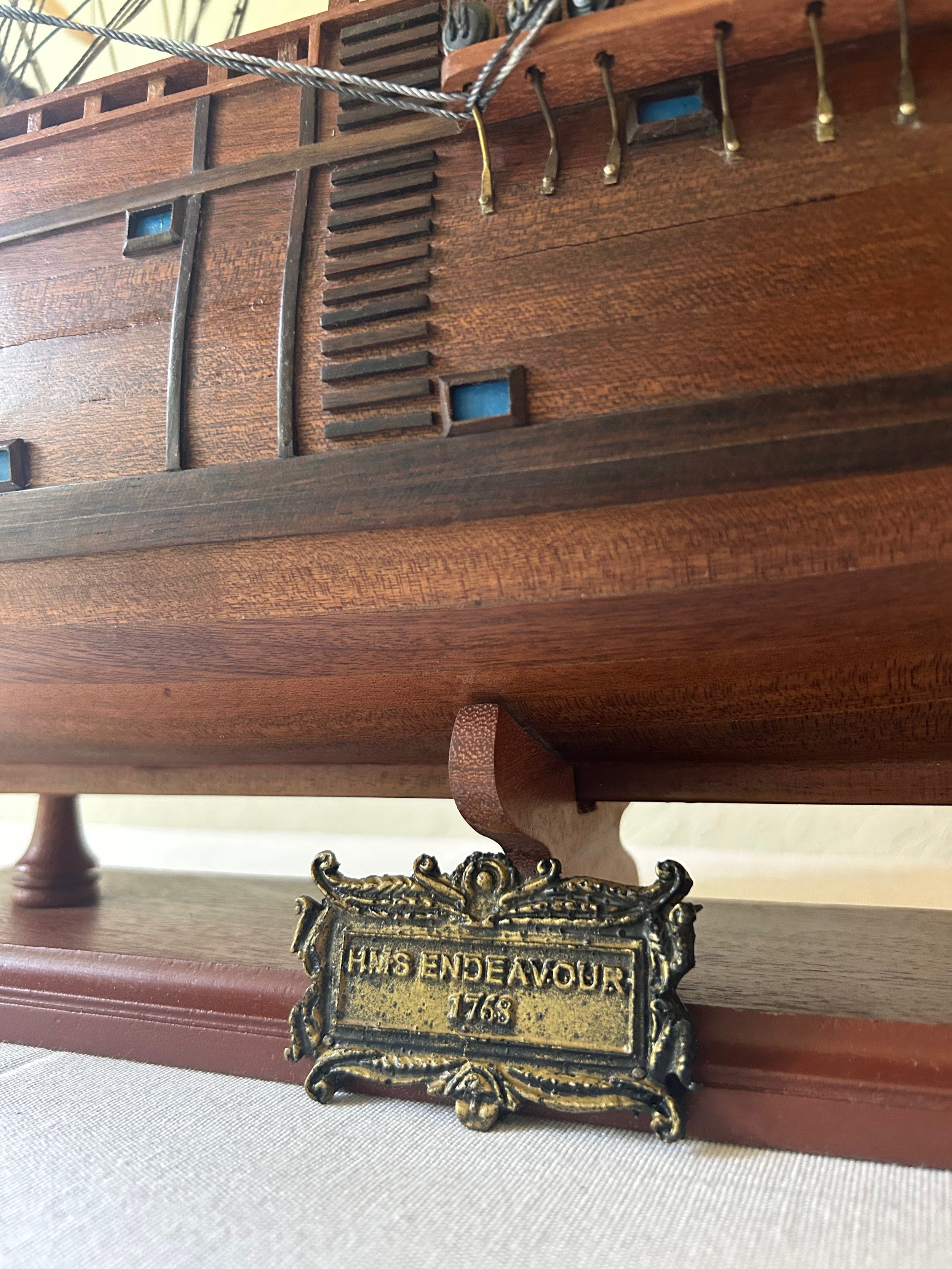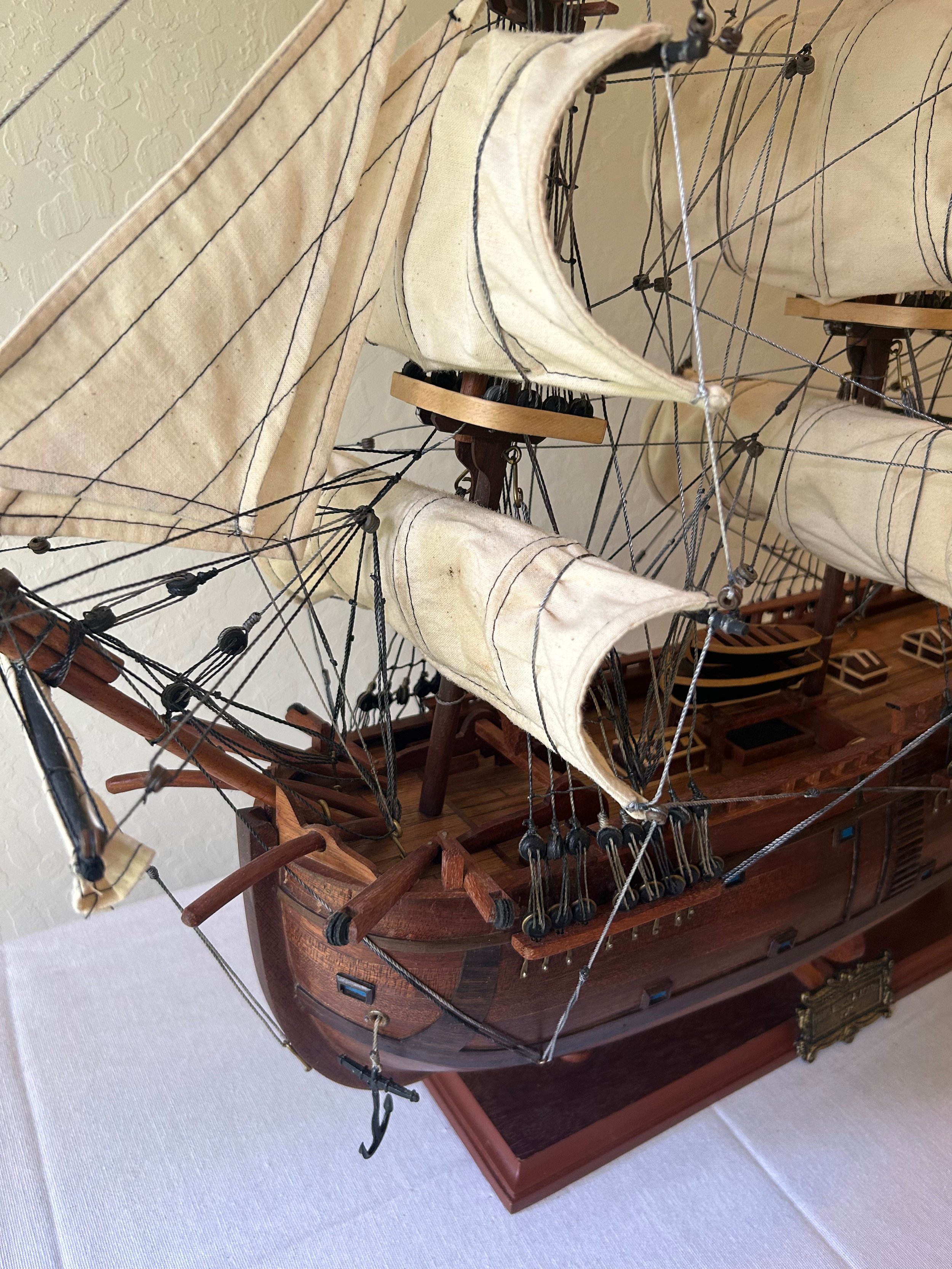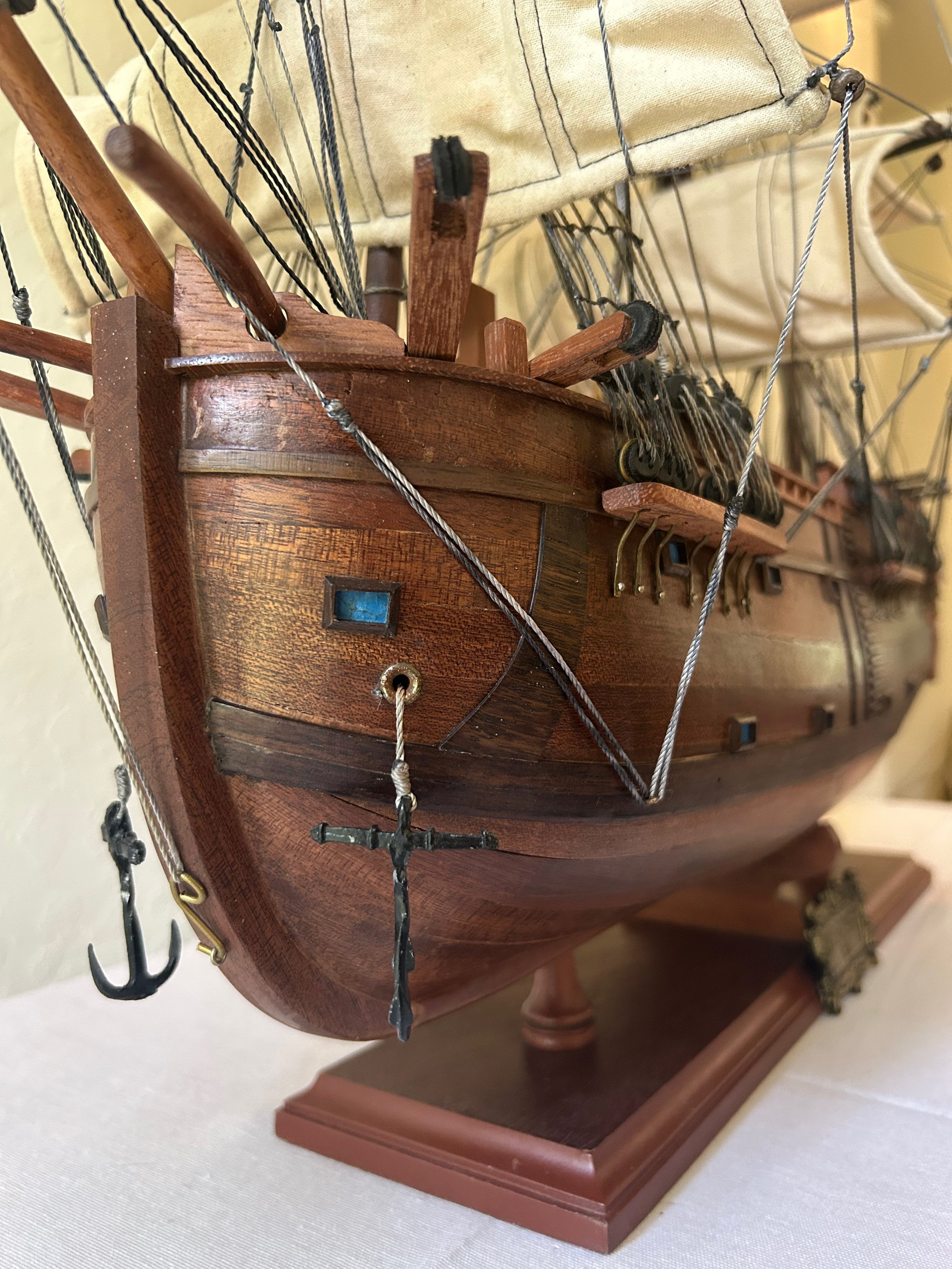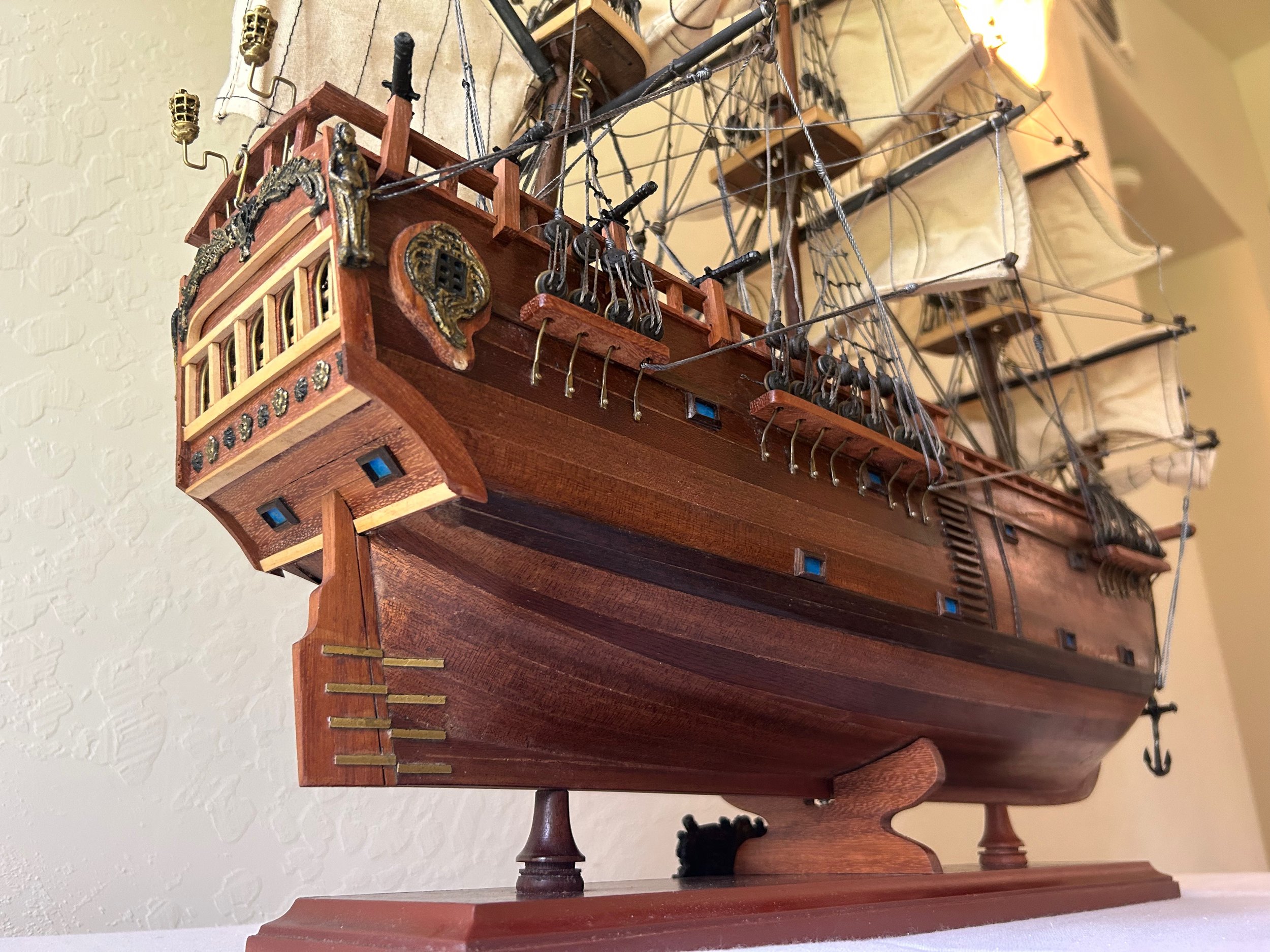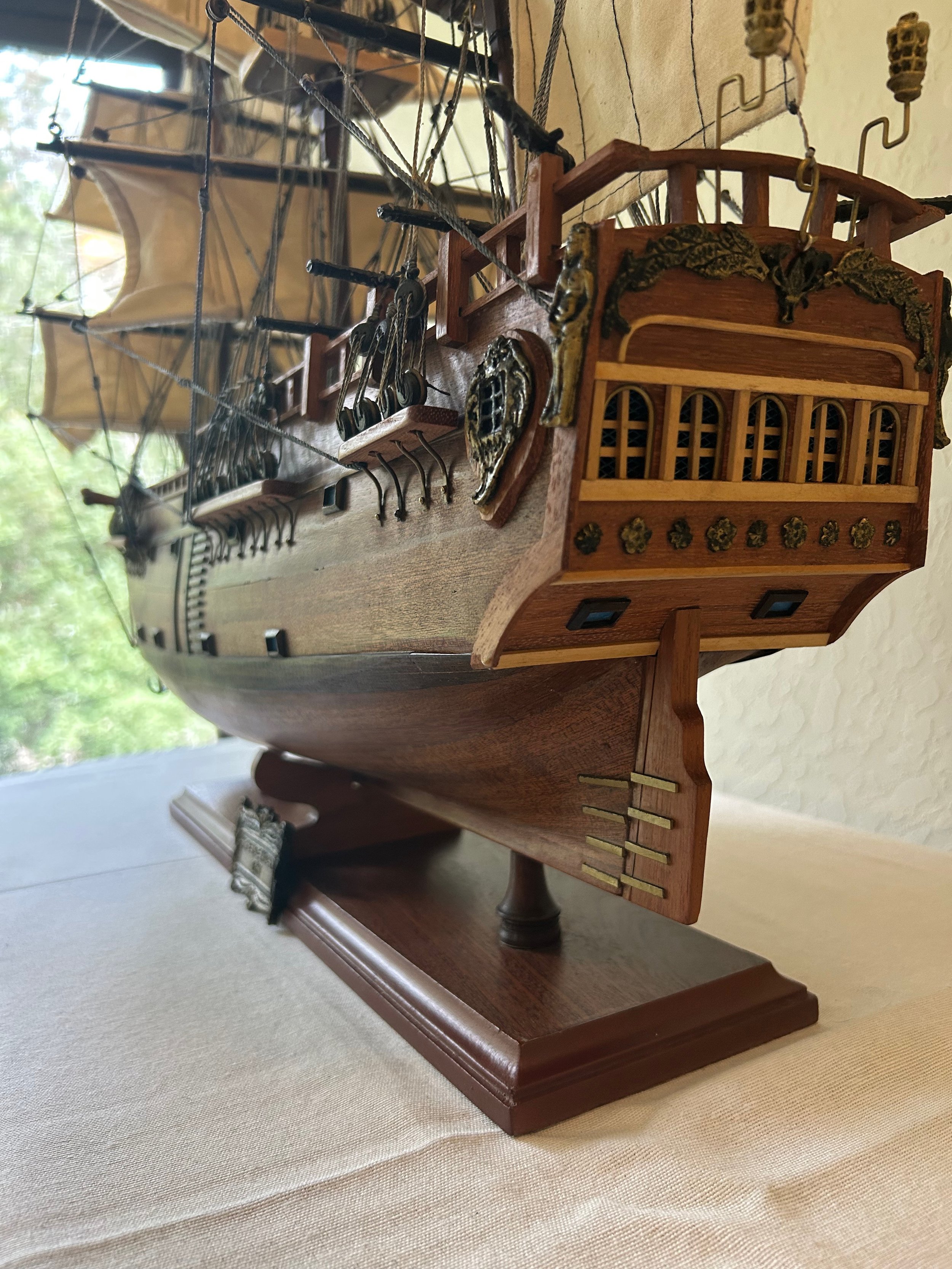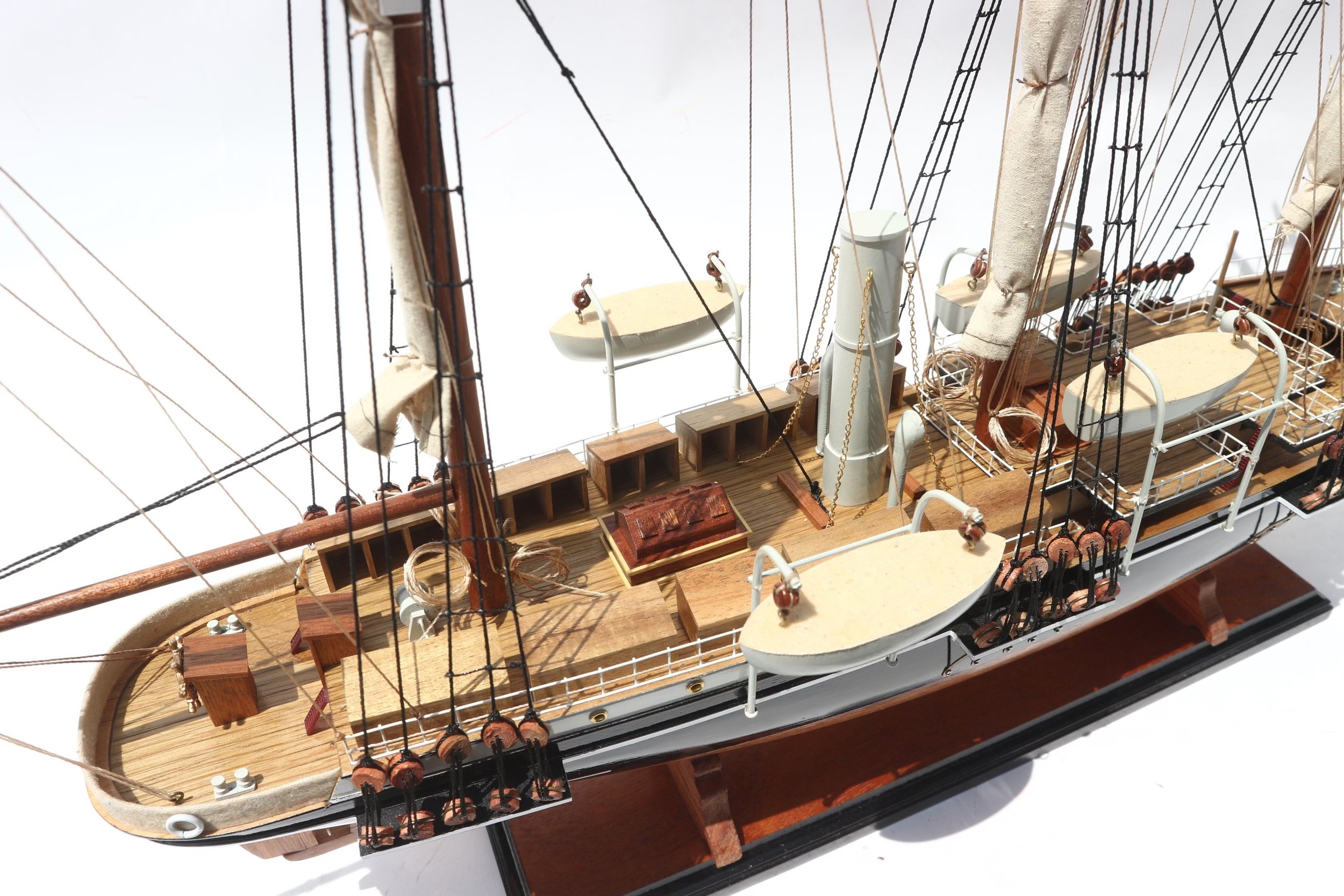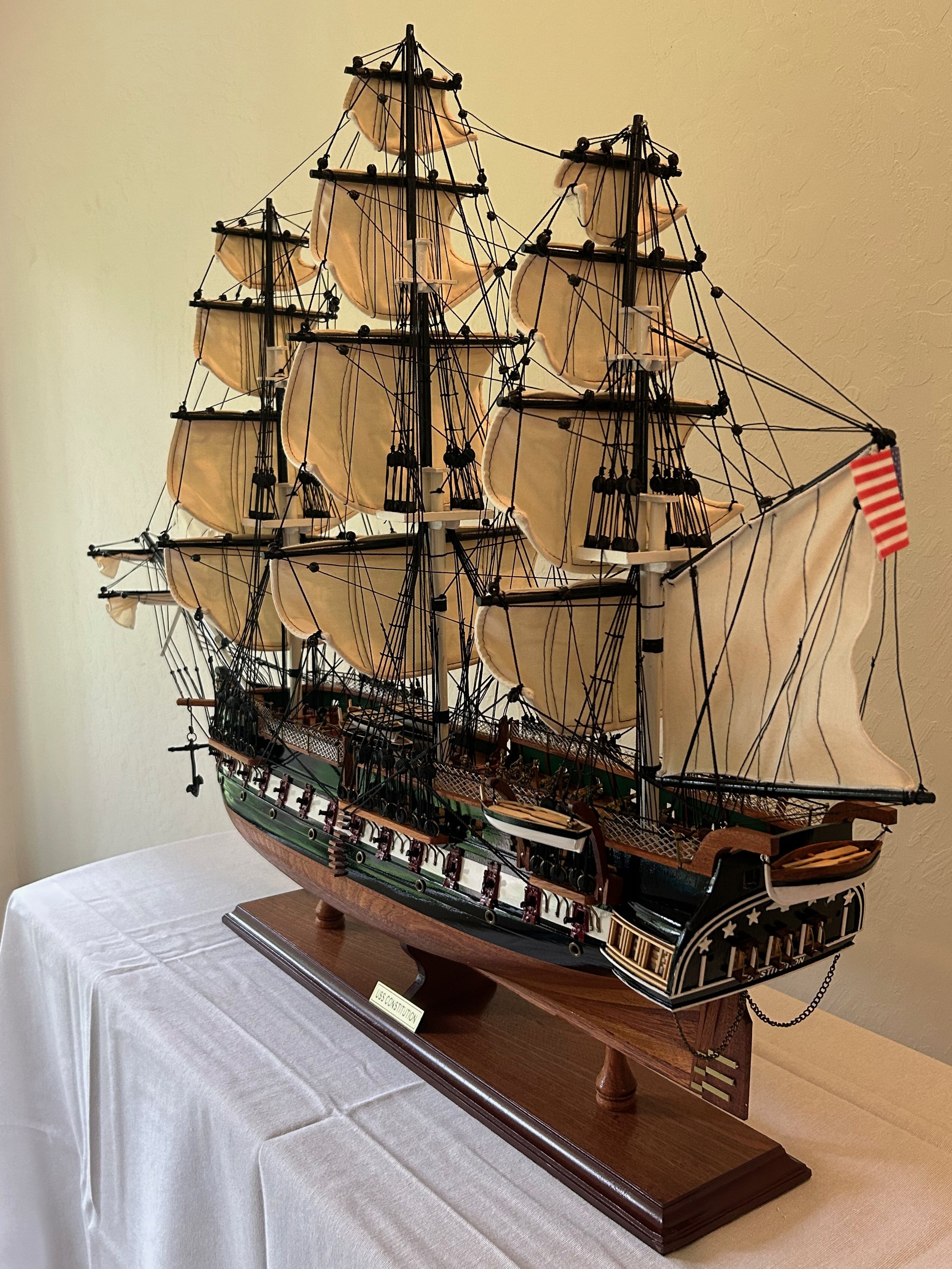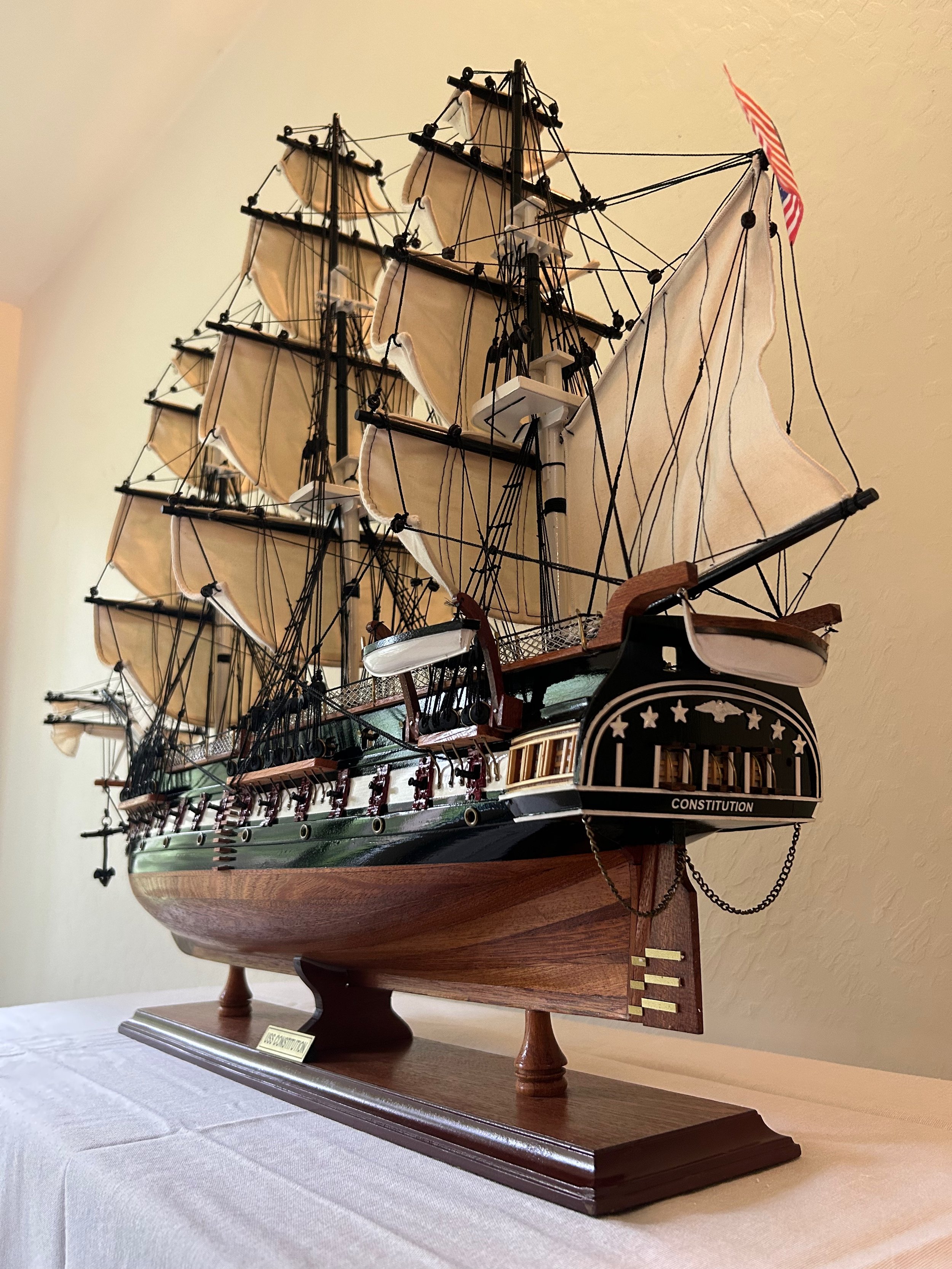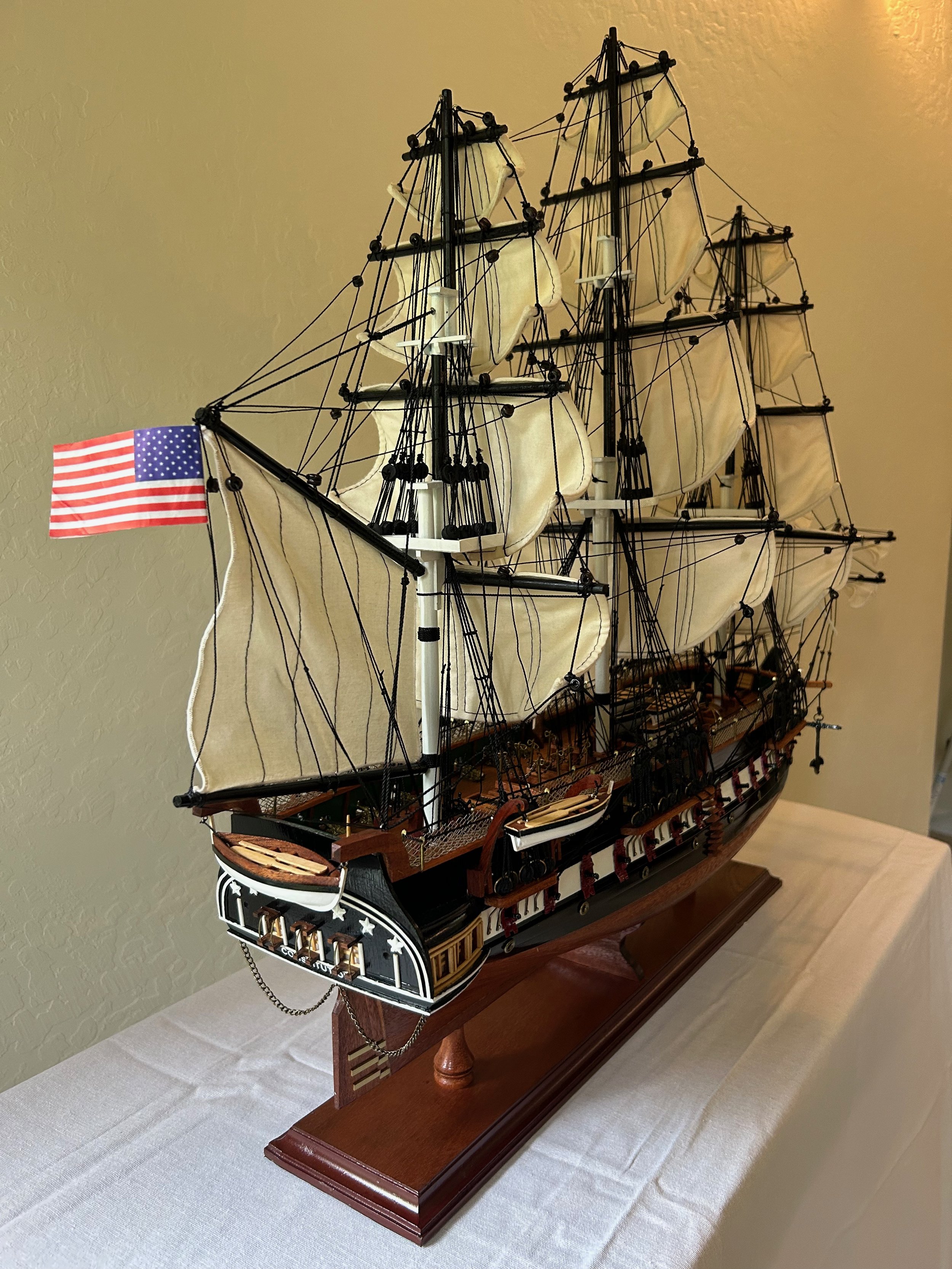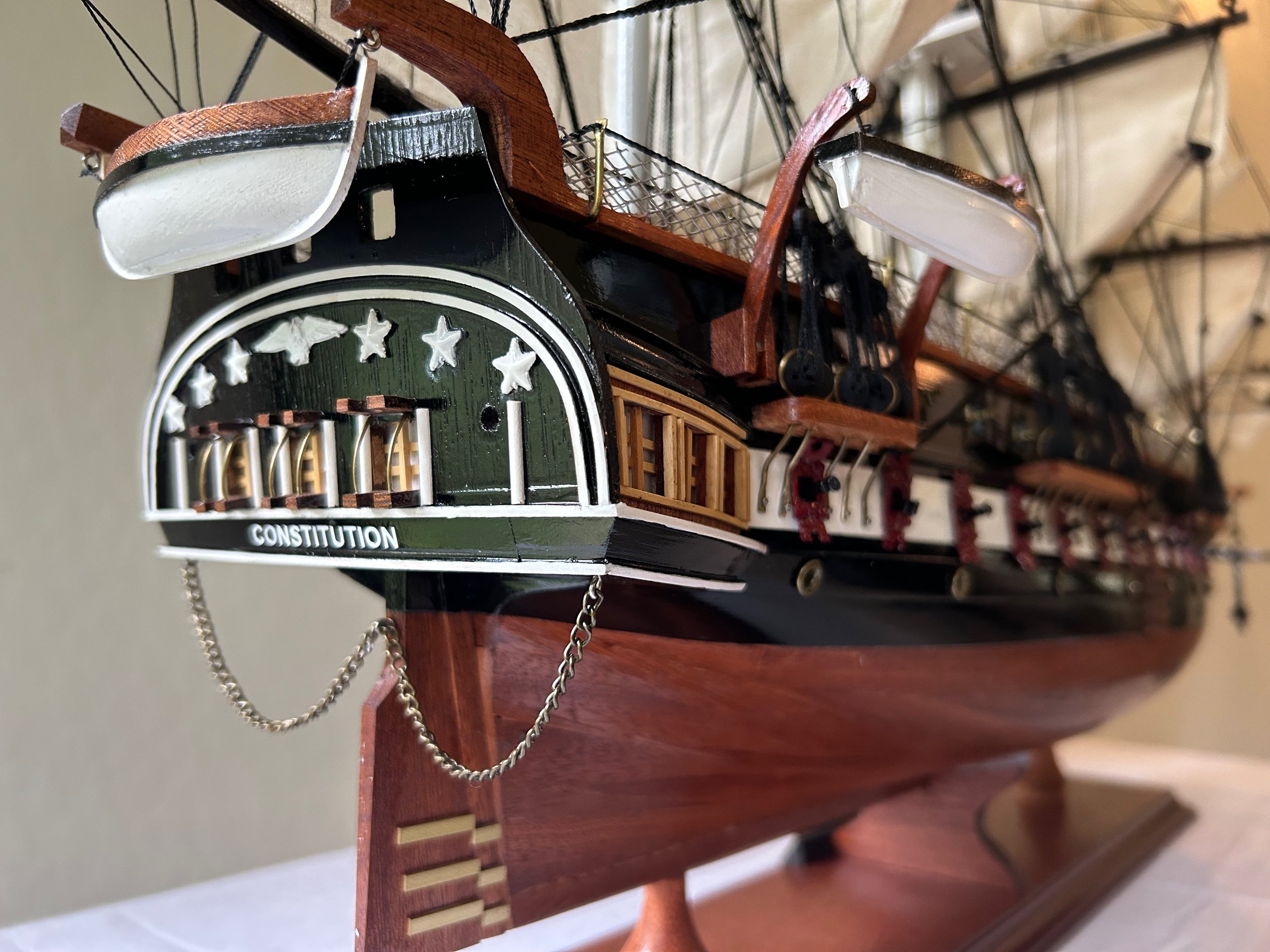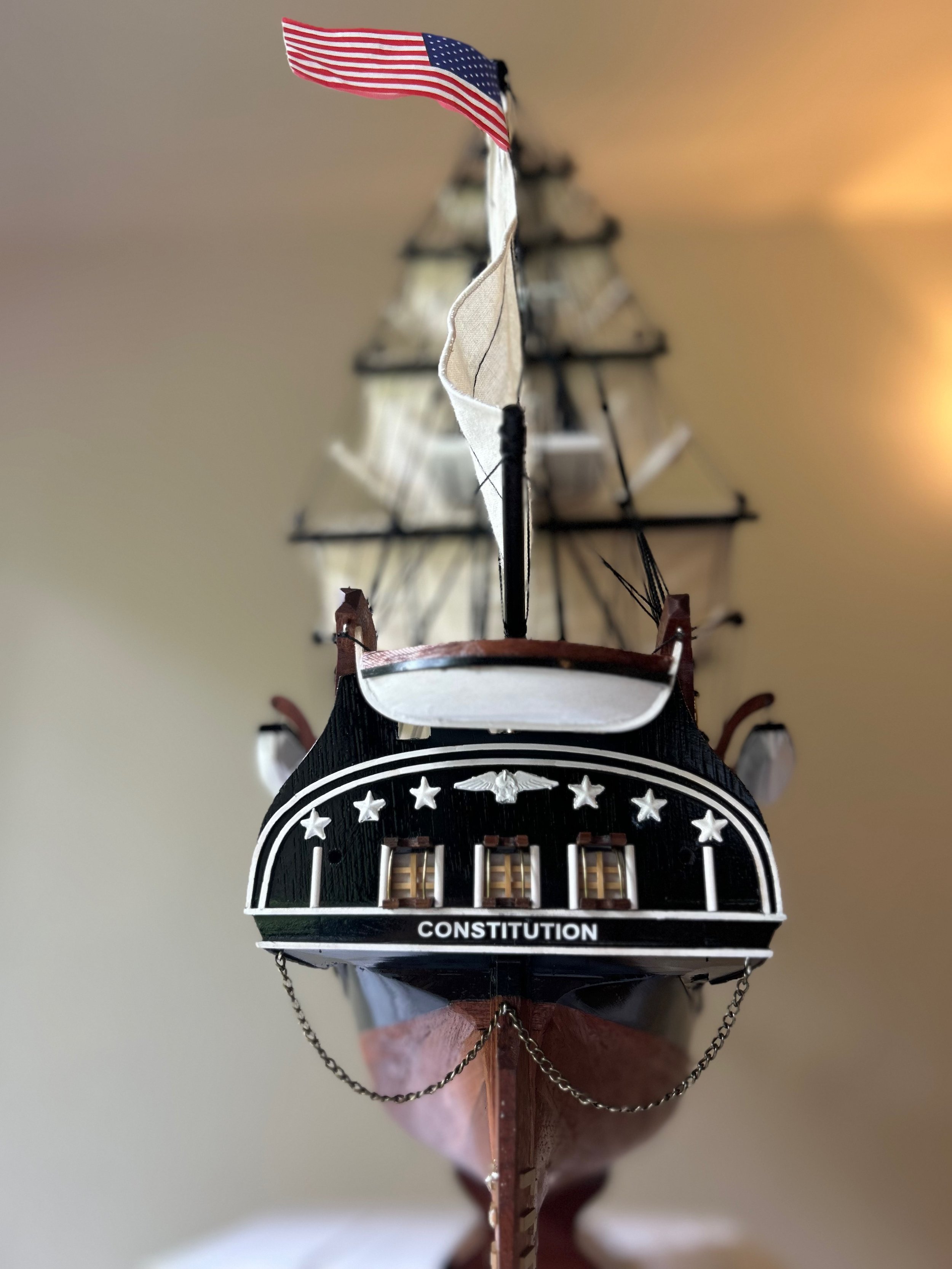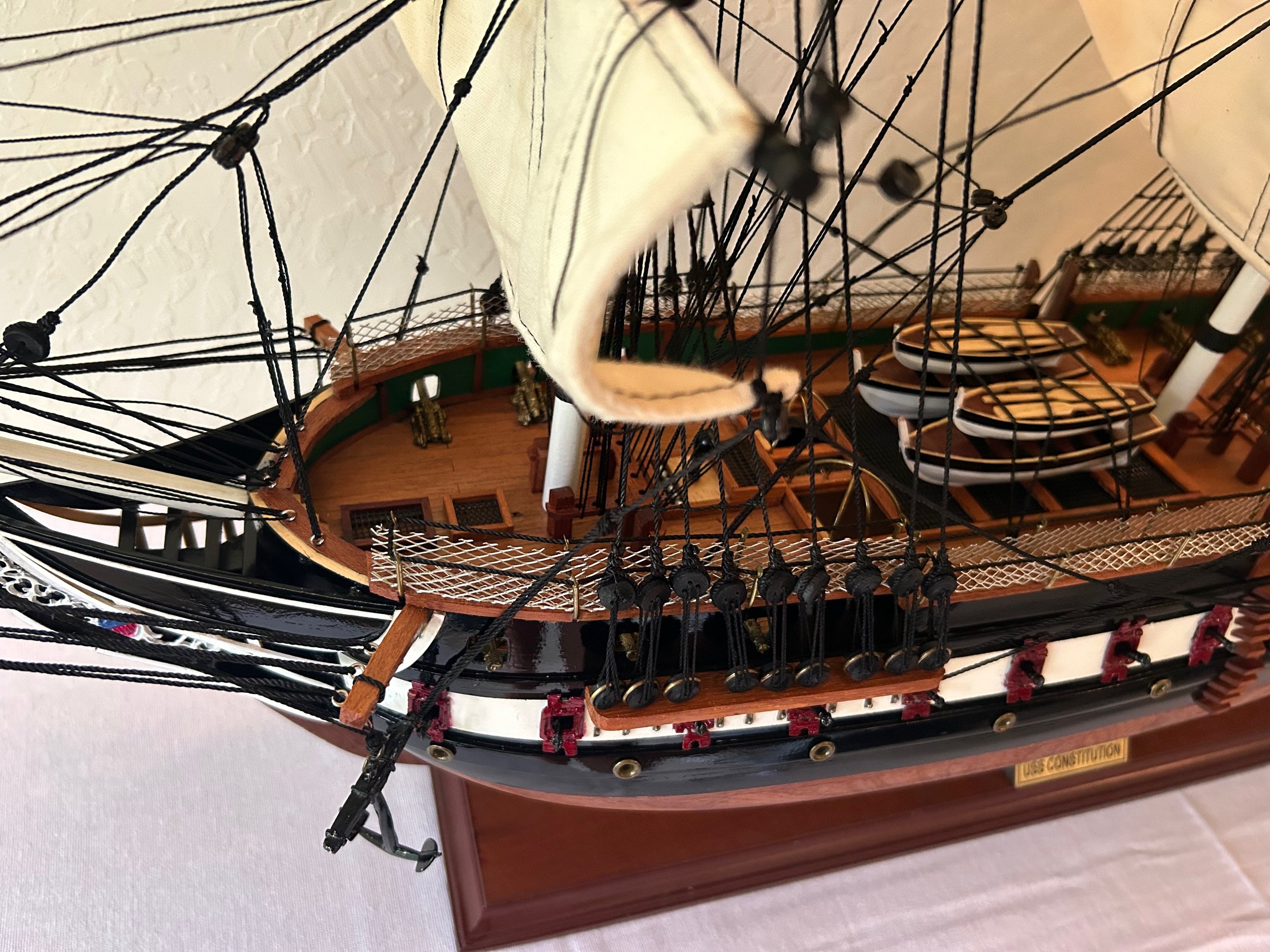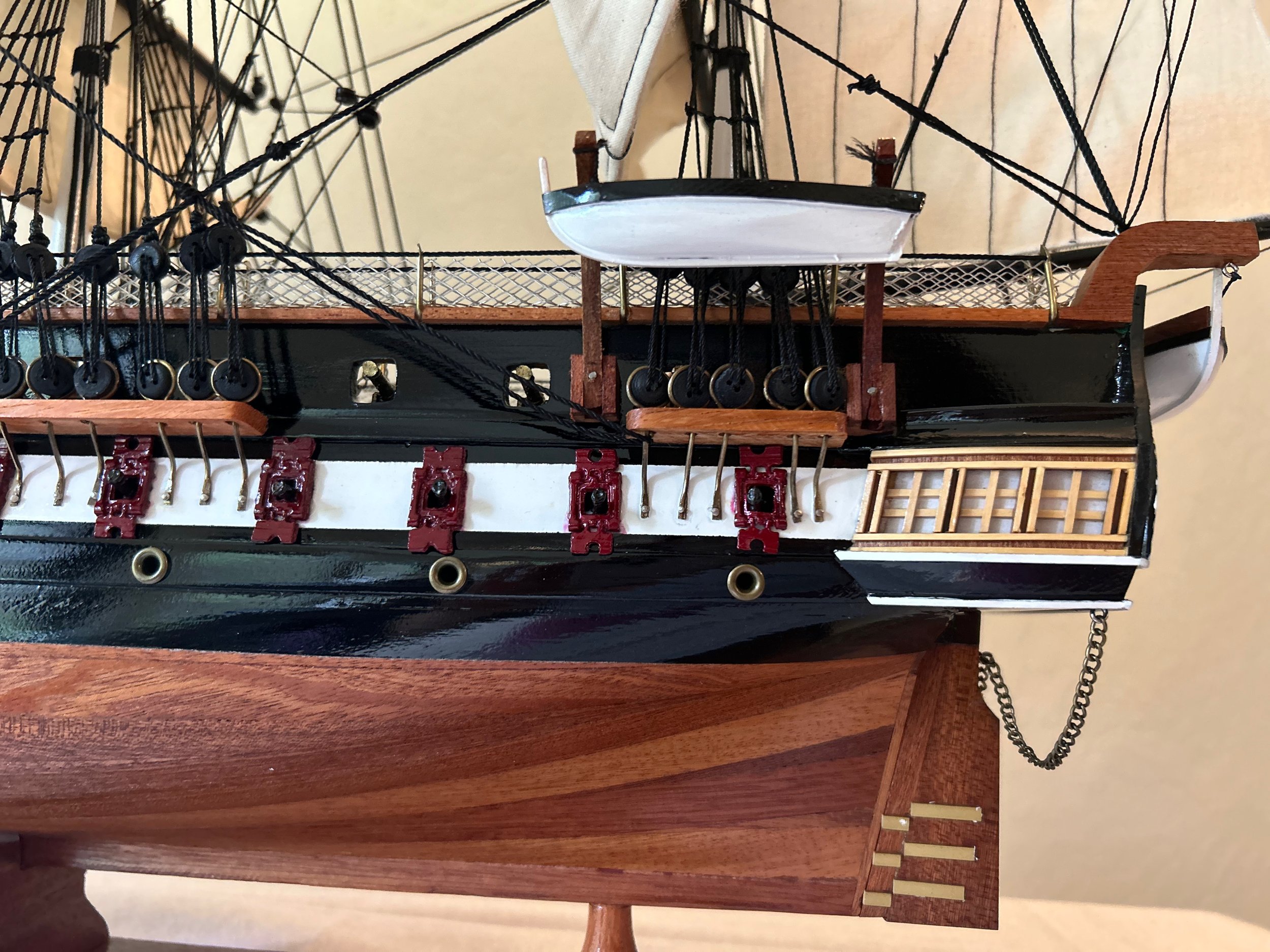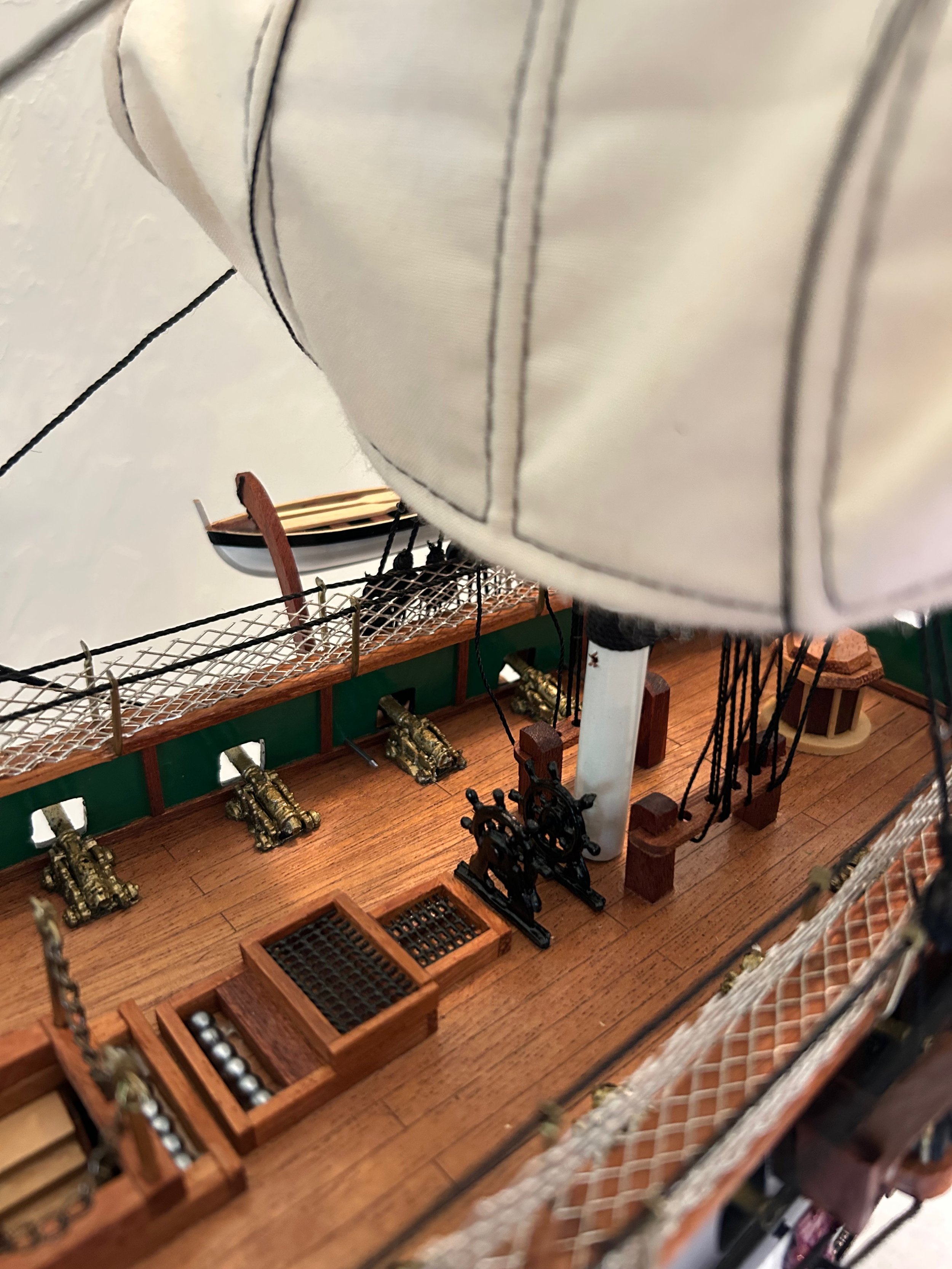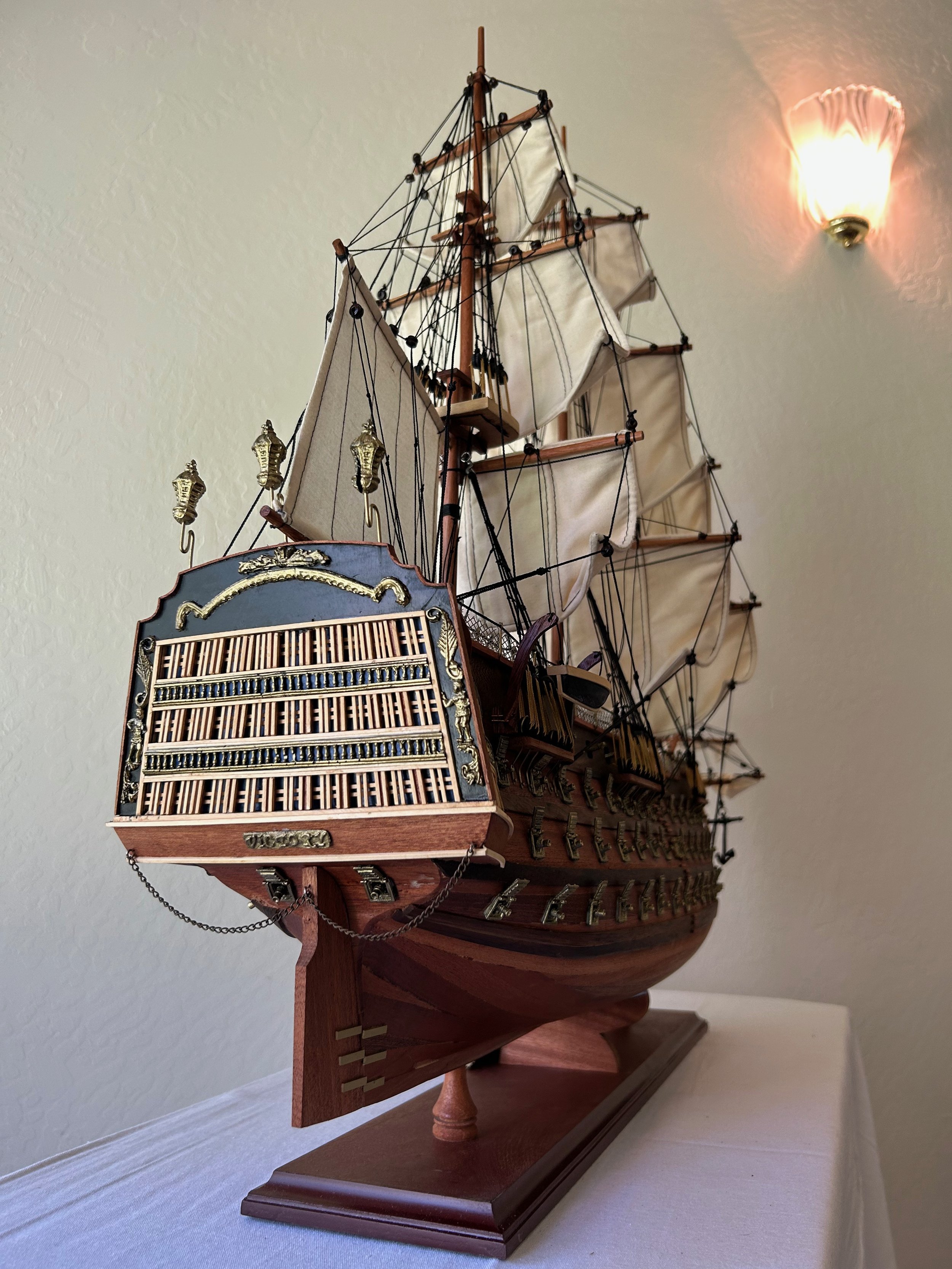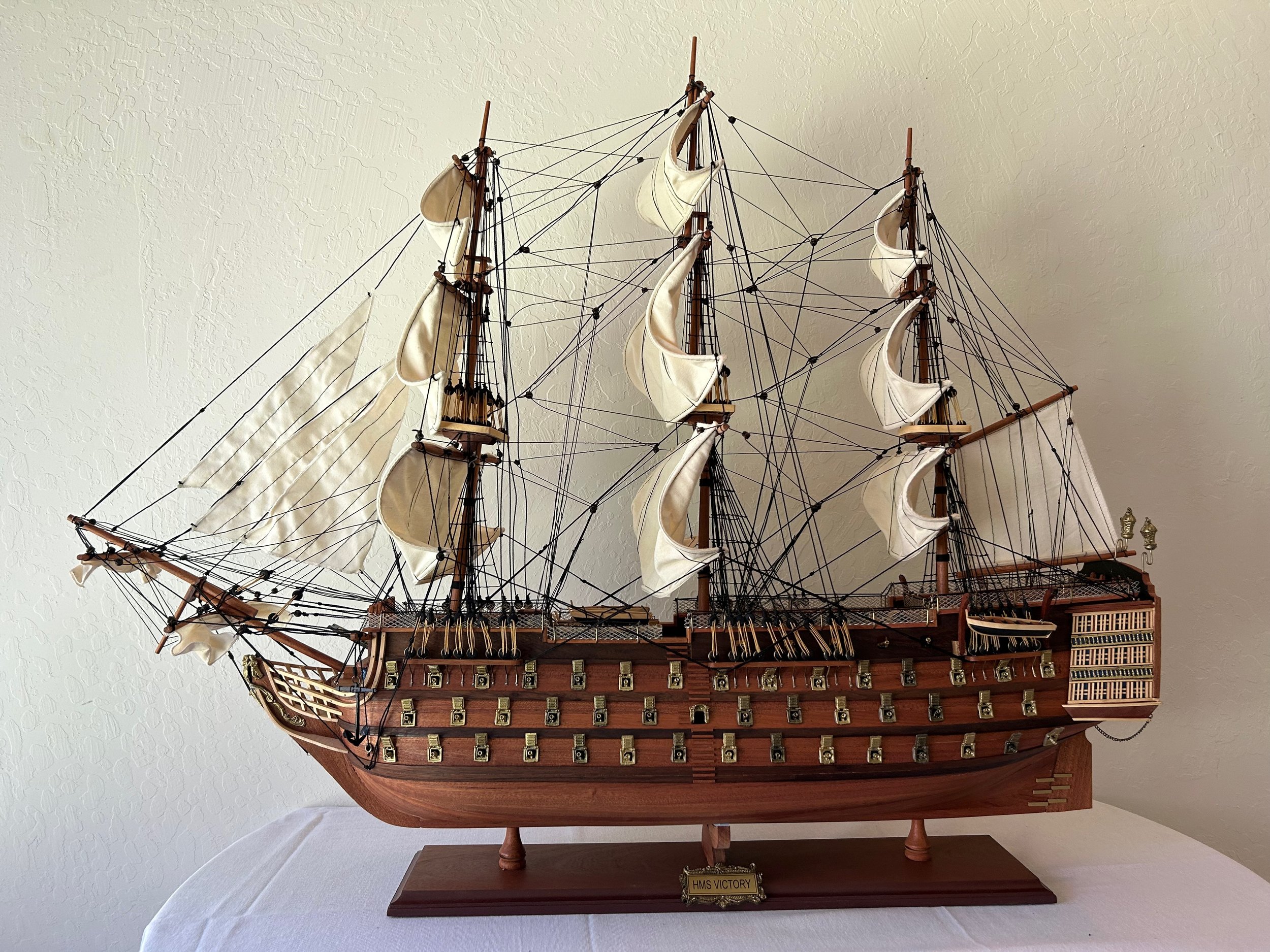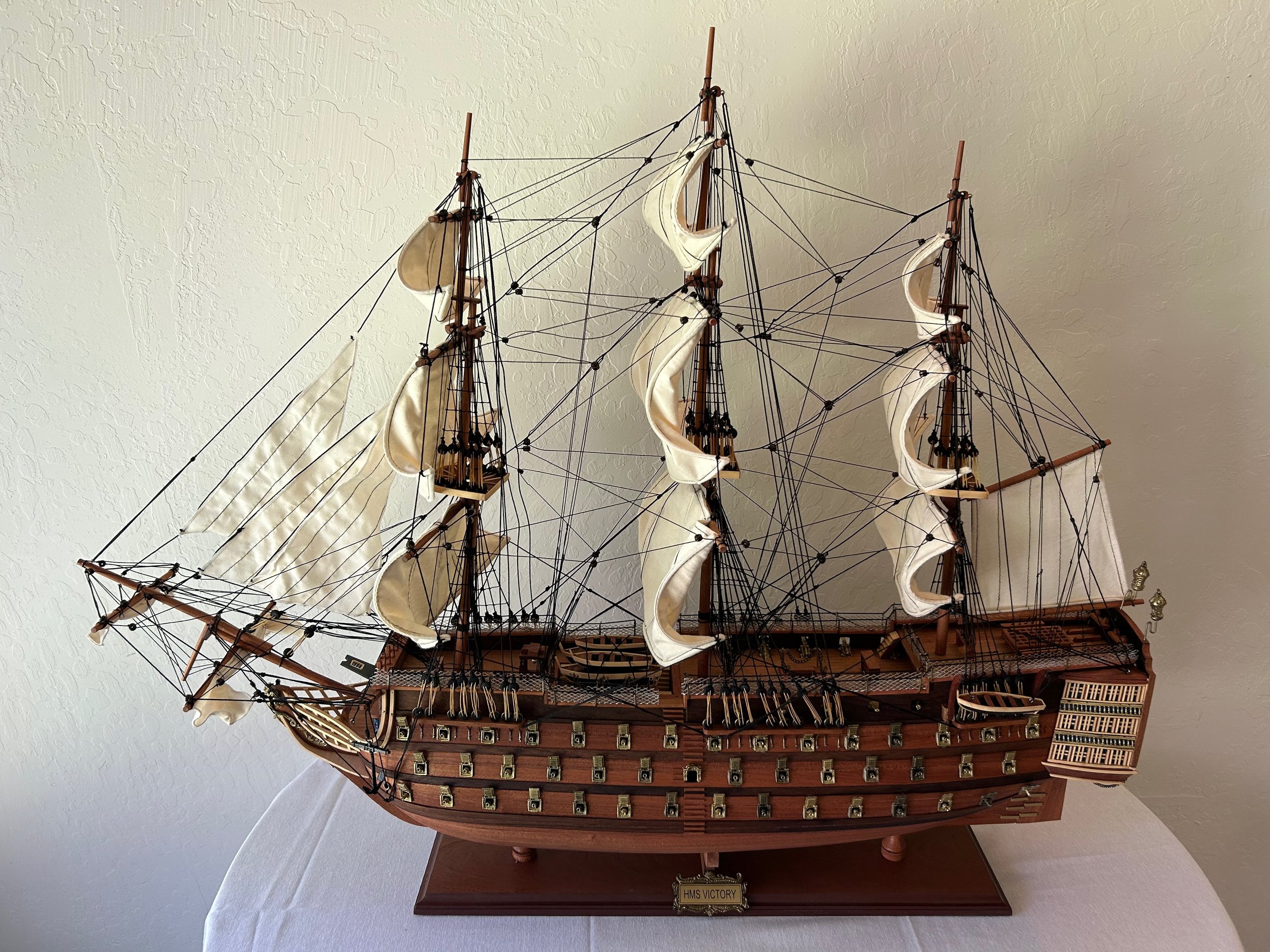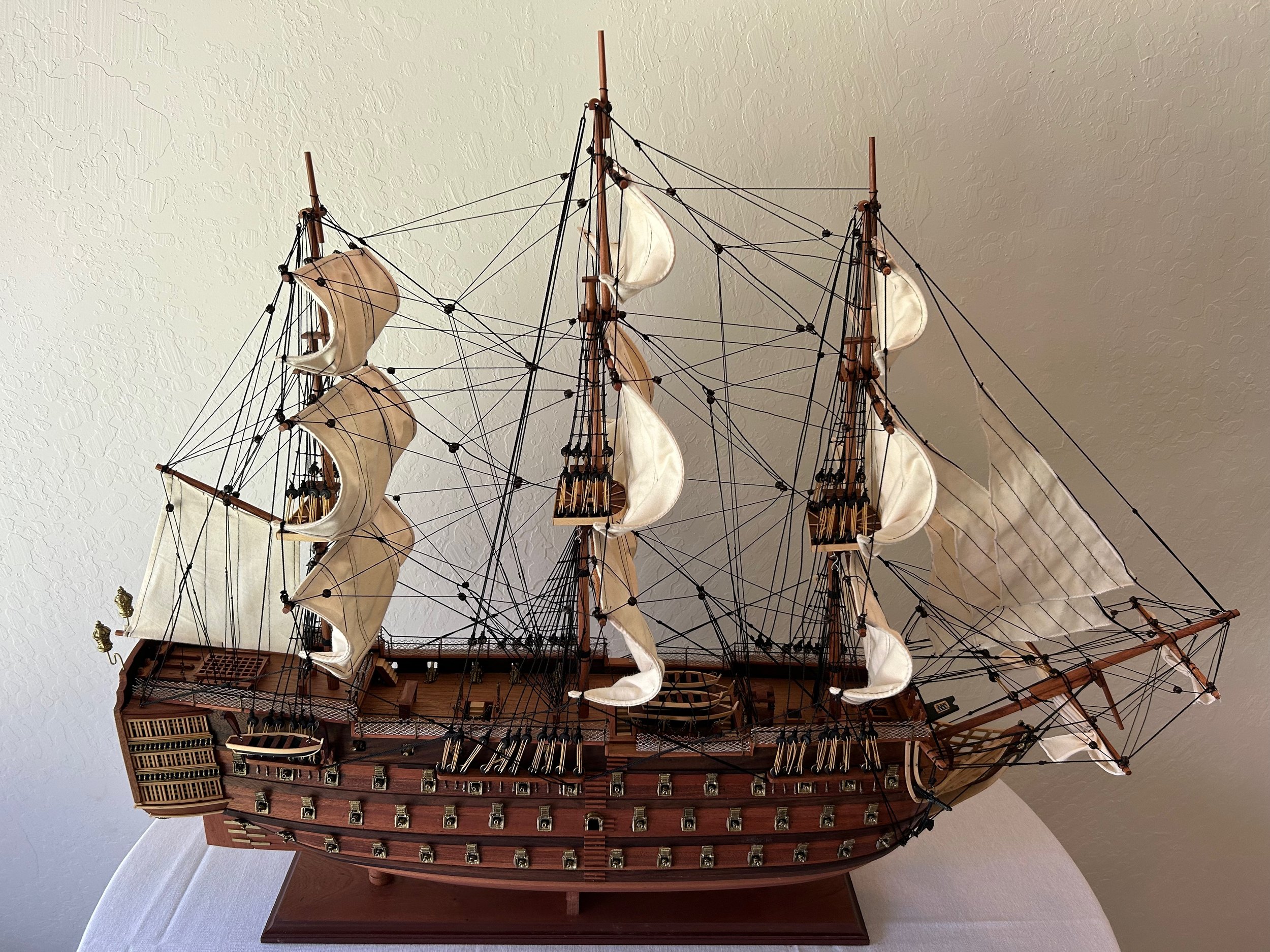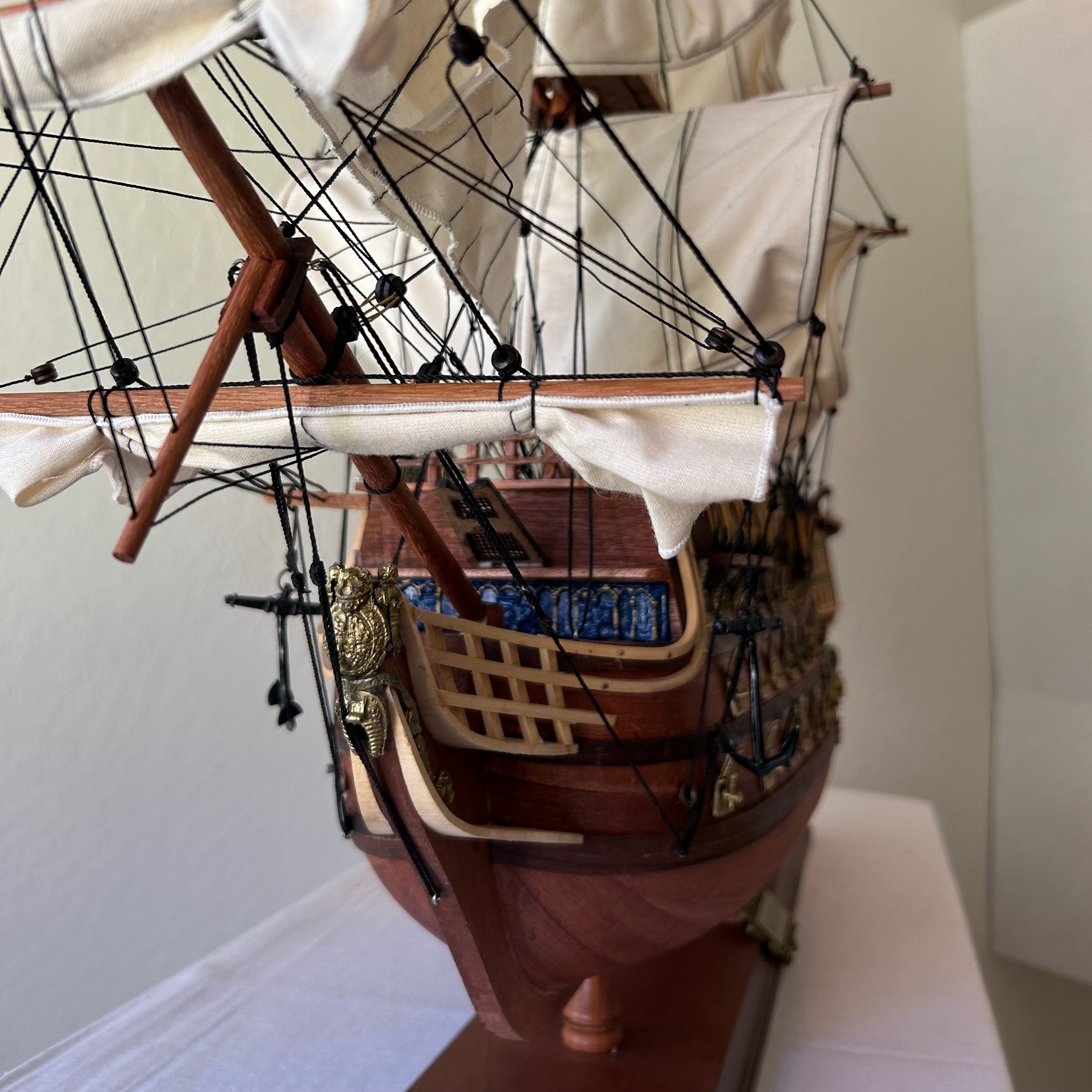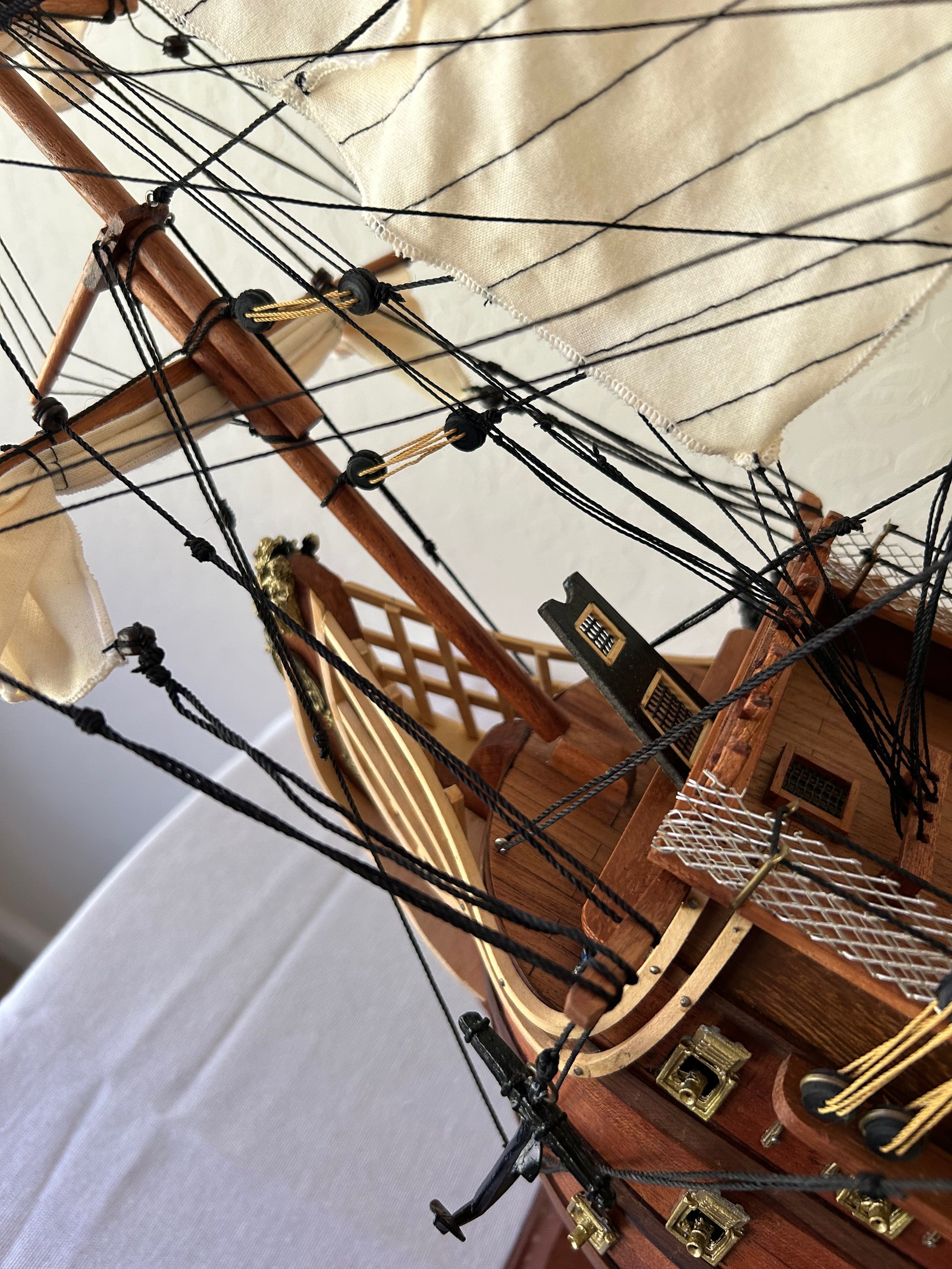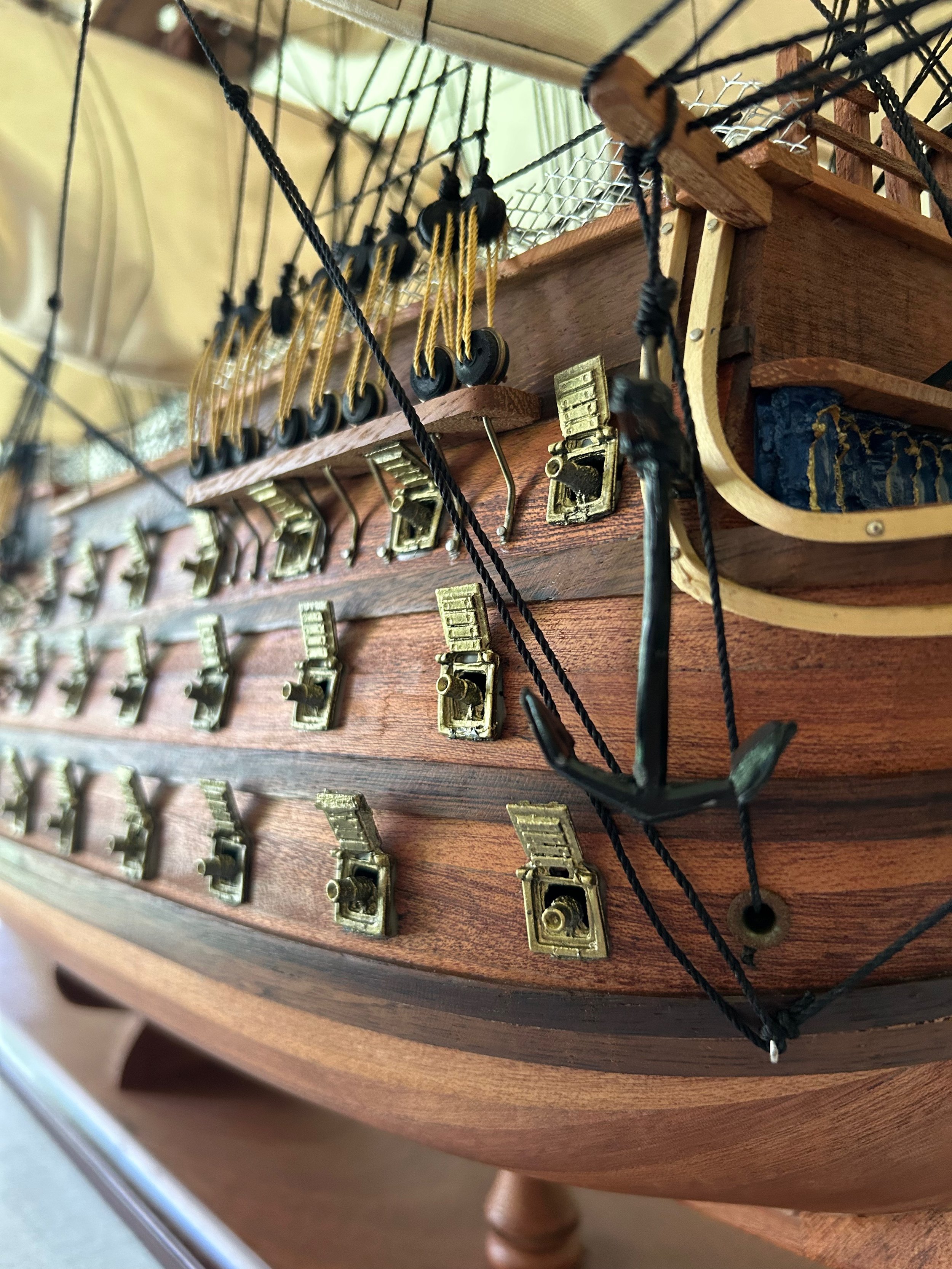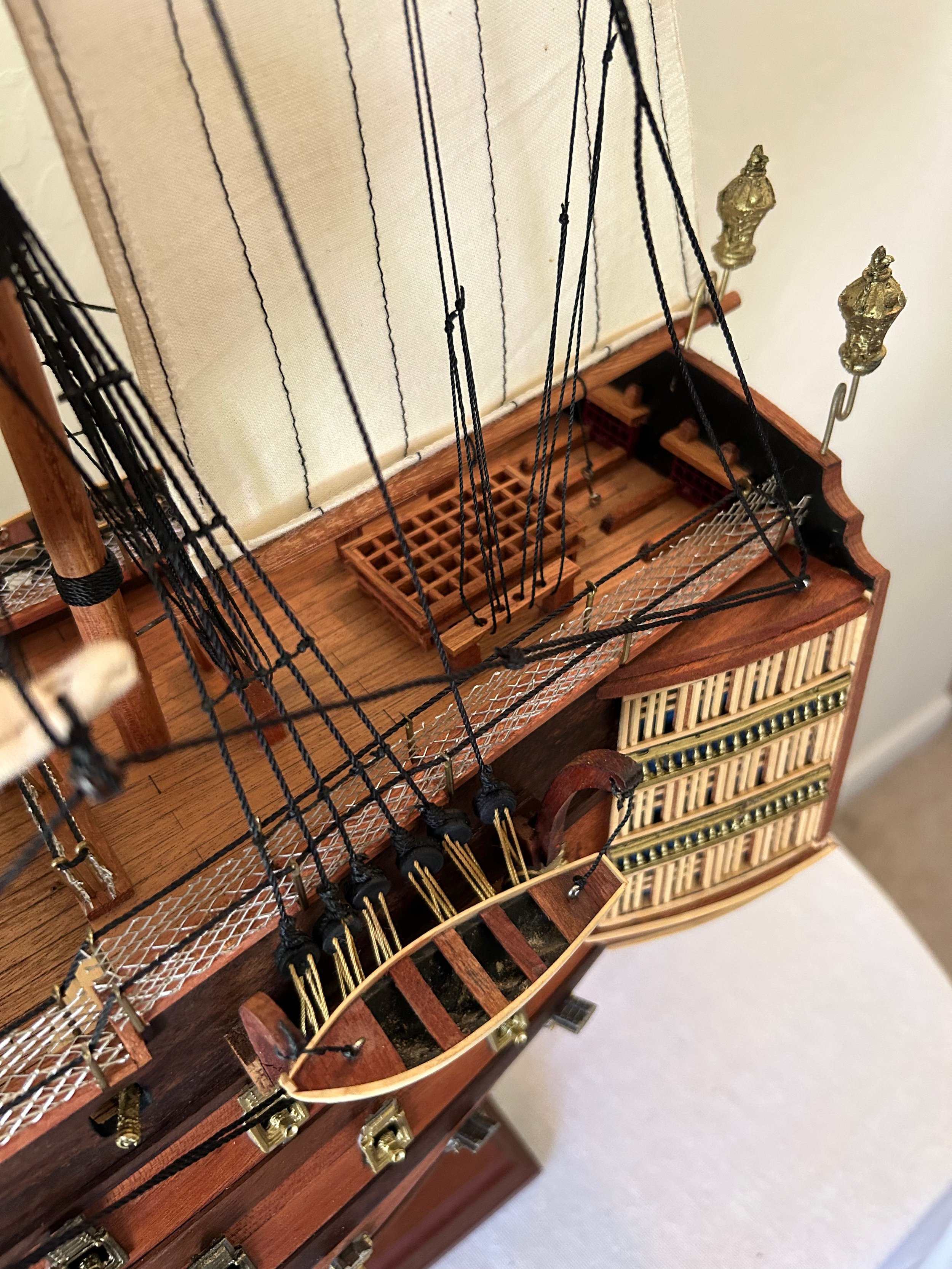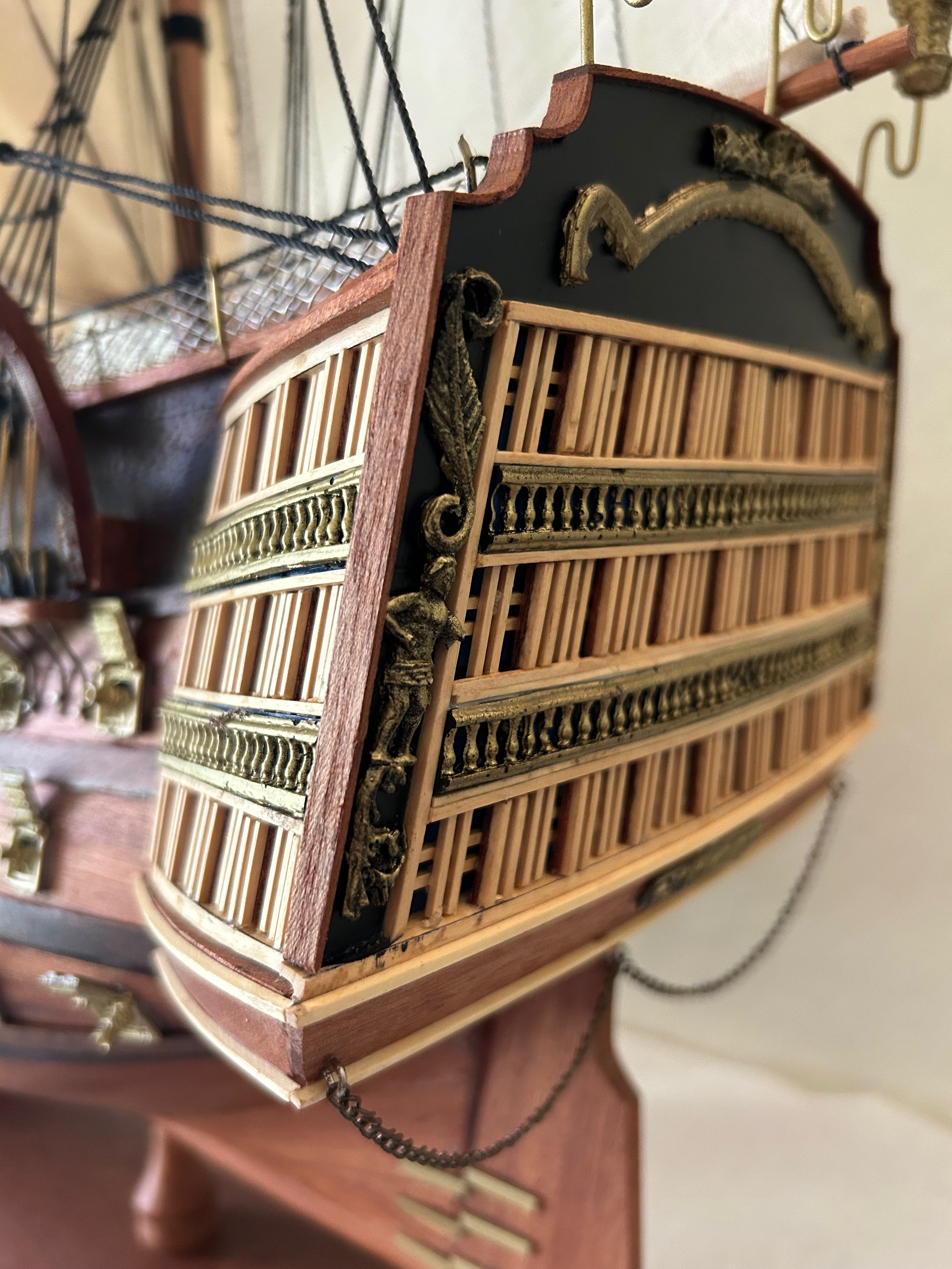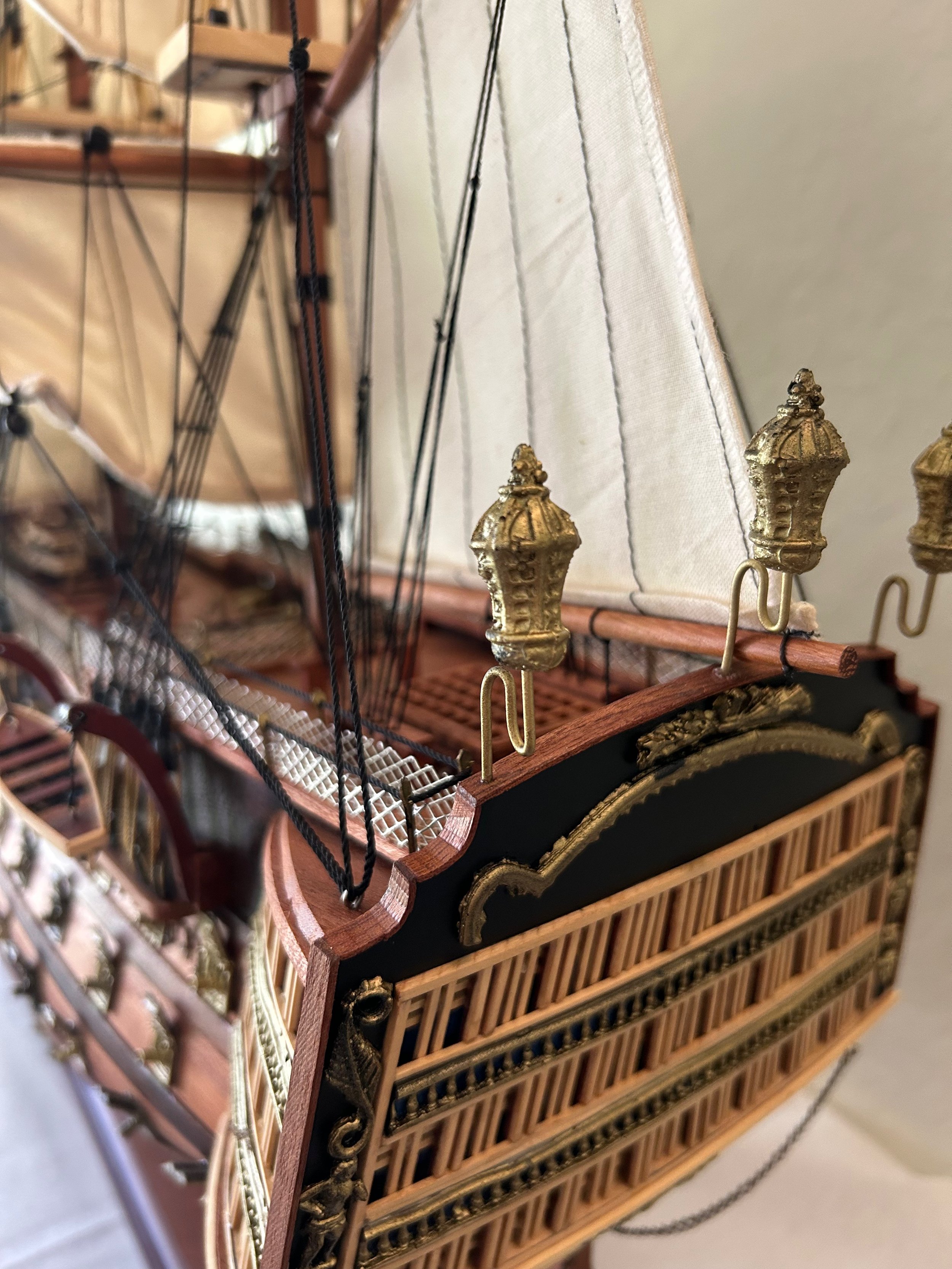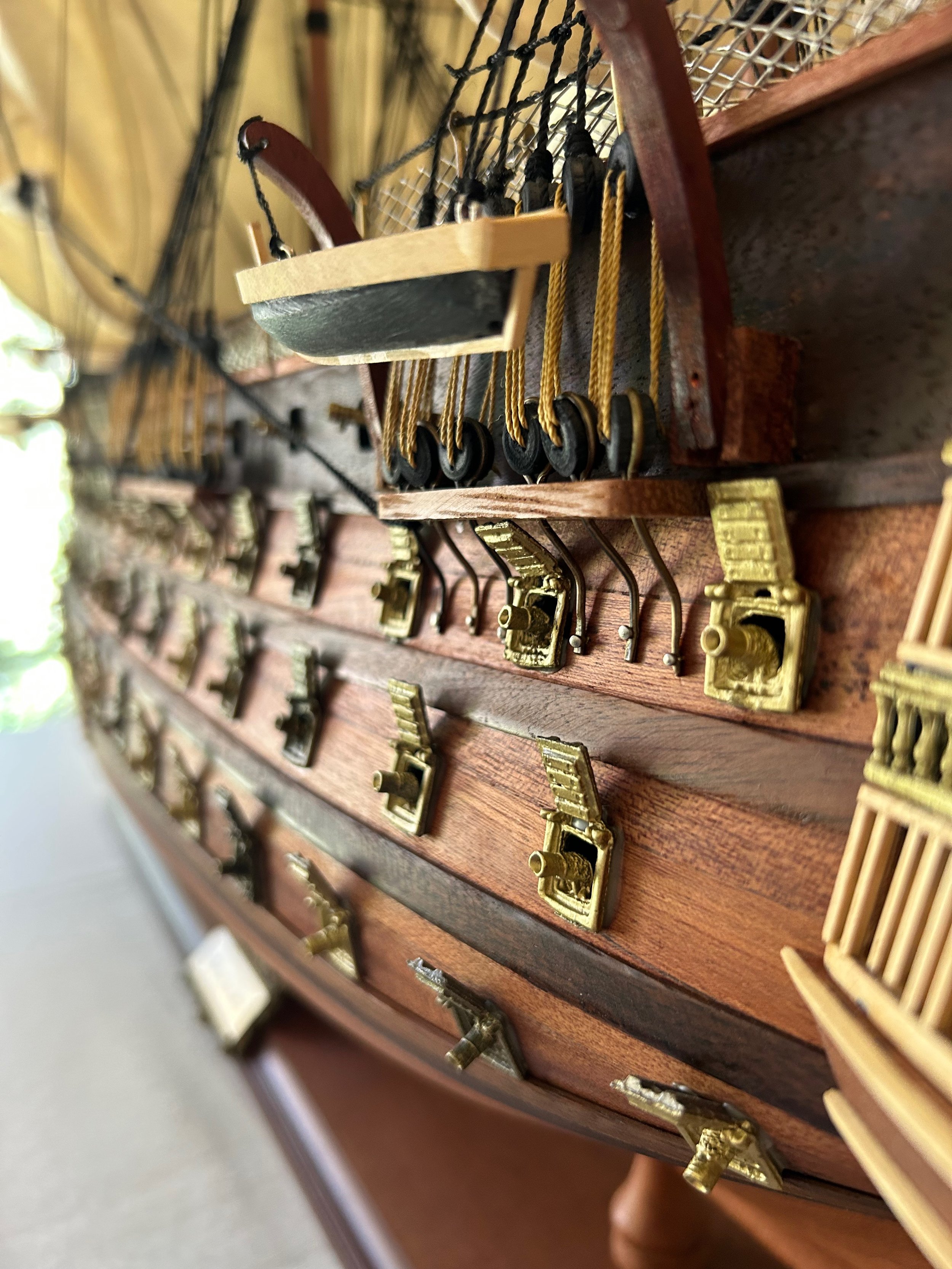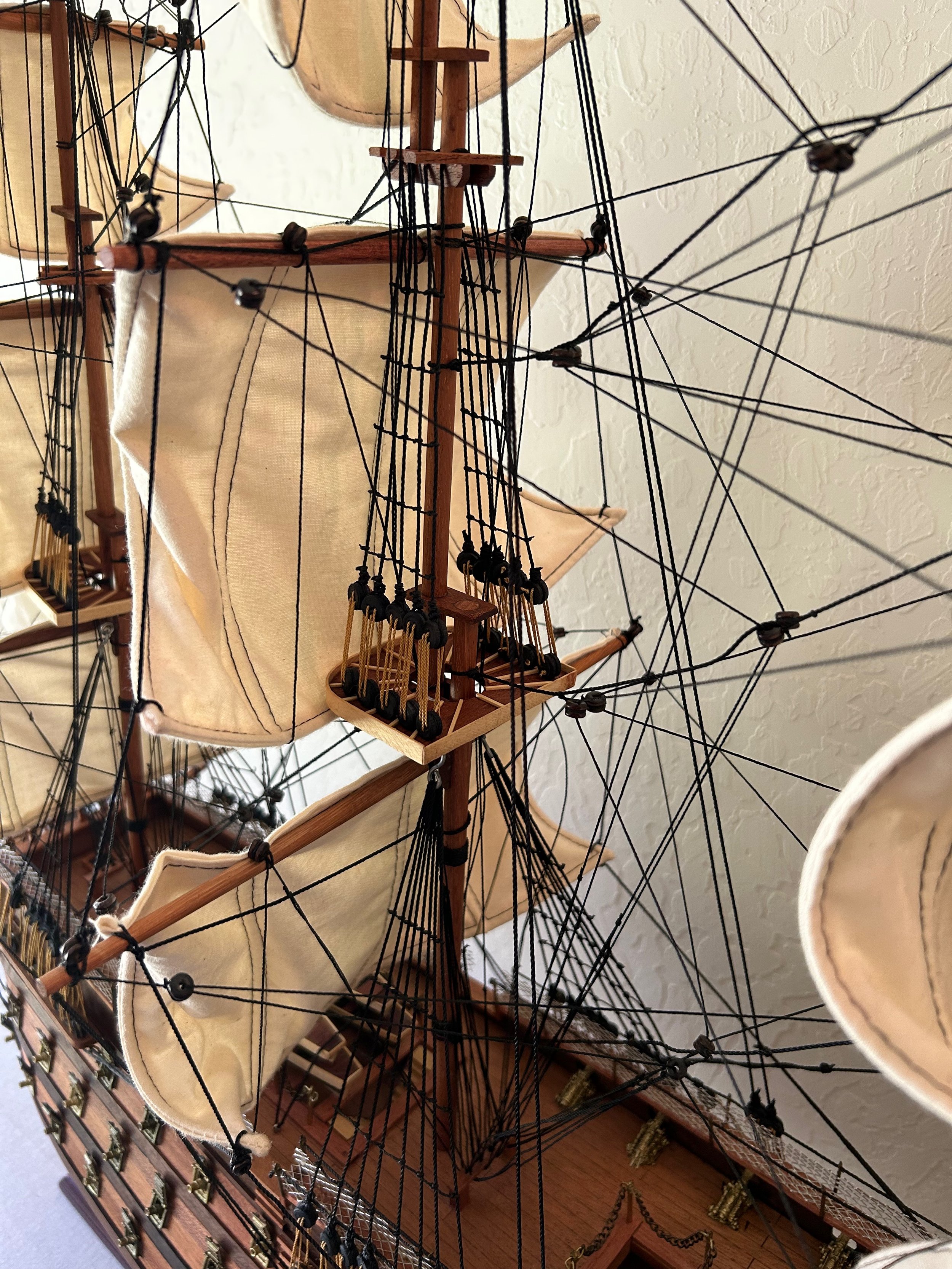The Black Pearl
A fictional ship known to be captained by Jack Sparrow in the Pirates of the Caribbean film series. She is featured in each film, and is known to be the fastest ship in the Caribbean.
A fictional ship known to be captained by Jack Sparrow in the Pirates of the Caribbean film series. She is featured in each film, and is known to be the fastest ship in the Caribbean.
A fictional ship known to be captained by Jack Sparrow in the Pirates of the Caribbean film series. She is featured in each film, and is known to be the fastest ship in the Caribbean.
Dimensions
Small | Large
Hull: 20in | 30in
Overall Length: 24in | 34.5 in (Bowsprit Included)
Height: 21in | 30in
Width: 9.5in | 11.5in (Sails Included)
About The Black Pearl
The Black Pearl (formerly known as the Wicked Wench) is a fictional ship in the Pirates of the Caribbean film series. In the screenplay, the ship is easily recognized by her distinctive black hull and sails. Captained by Captain Jack Sparrow, the Black Pearl is said to be "nigh uncatchable". In the first three films, she either overtakes or flees all other ships, including both the Interceptor, which is regarded as the fastest ship in the Caribbean, and the Flying Dutchman, which is faster than the wind. Her speed is derived from several factors such as the large number of sails she carries and being partly supernatural. As stated in Dead Man's Chest and At World's End, the Black Pearl is "the only ship that can outrun the Dutchman" and this is evidenced in the maelstrom battle between the two ships in the movies.
In the universe of the Pirates of the Caribbean, The Black Pearl was built by the French and was originally a merchant ship called the Wicked Wench (the name of the ship from the Pirates of the Caribbean attraction at Disneyland Park, which is shown shelling a fort), but its crew later turned to piracy under the command of a pirate captain named Morgan, who was killed during a battle with Spanish Royal Navy Captain Armando Salazar. The helmsman and the protagonist of the series, Jack Sparrow, was granted captaincy of the Wicked Wench after out-maneuvering Salazar and saving the crew during battle.
Years later, the Wicked Wench became registered to the East India Trading Company and owned by Cutler Beckett, the EITC Director for West Africa. At the time, Jack Sparrow was in the employ of the East India Trading Company and regained captaincy of the Wicked Wench (this fits in with reality as history notes that pirates did not build ships specifically to commit piracy. Instead, they either bought or stole small, fast vessels and then retrofitted them with heavy armaments). (As detailed in the 2011 Disney Publishing novel, Pirates of the Caribbean: The Price of Freedom, written by A.C. Crispin)
Jack Sparrow captained the Wicked Wench for Cutler Beckett for about a year, hauling various cargoes, but he refused to haul slaves. Hoping to recruit Sparrow as one of his many "operatives", Beckett indulged what he regarded as an odd peccadillo of Sparrow's until he and the captain came to part ways. Beckett had dispatched Sparrow on a mission to find the lost island of Kerma, and the treasure at the heart of its underground labyrinth, but Sparrow double-crossed the EITC official and claimed he couldn't locate the island. Suspicious that Sparrow had indeed found the island and the treasure, but had not given him its accurate location, Beckett determined to browbeat the captain into obedience and demanded that the young captain transport a cargo of slaves to the New World. Initially, Sparrow agreed, but when he realized that he was betraying the Wicked Wench, as well as himself, he rebelled and freed the slaves by taking them to Kerma for safe asylum.
Furious that Sparrow had flouted his orders and stolen the "cargo" of "black gold", Beckett had Sparrow thrown into jail. After allowing him to languish for a couple of months, Beckett had Sparrow transported to the Wicked Wench's anchorage, about a mile from the coast of West Africa, near Calabar on the Bight of Benin. After personally branding Sparrow with the "P" brand (so he'd be forever identifiable as a pirate), Cutler Beckett gave the order to fire incendiary carcass charges at the Wicked Wench, to demoralize her captain. Sparrow fought his way free from his guards, dove overboard, and attempted to rescue his burning, foundering ship, but he was too late. The Wicked Wench turned into an inferno, then sank, taking Jack with her. But, while dying, Sparrow called upon Davy Jones, and struck a bargain with him: his soul and one hundred years of service aboard the Flying Dutchman, in return for continued human existence of thirteen years as captain, plus saving the Wicked Wench and transforming her into the fastest, most dangerous pirate ship on the seven seas. Jones agreed and raised the ship from the sea floor, now a charred vessel with an angel figurehead.
In keeping with her scorched appearance, Jack painted his ship black and added black sails, rechristening her "the Black Pearl". Two years later, the Black Pearl was in search of the mysterious Isla de Muerta with a new crew, where the legendary Chest of Cortés was hidden. Captain and crew agreed to equal shares of the treasure, but devious first mate Hector Barbossa persuaded Jack that equal shares included knowing the treasure's location. Jack complied, and soon after Barbossa led a mutiny and marooned Jack on an island with nothing but a pistol containing one shot.
The crew found the Aztec gold, which was spent very quickly, not believing in the curse placed on it: that anyone who stole the coins would become an undead being, unable to feel anything but insatiable hunger, and that only moonlight would reveal their true form. This curse being real, the pirates were soon hideous living skeletons with tattered flesh and clothing clinging to their bones. Even the Black Pearl was affected by the curse upon its crew, becoming constantly shrouded in an eerie mist and operating with tattered sails ripped in many places.

